
We hope that each of you, our readers, will enjoy and appreciate this article we present about Earth’s Amazingly Abundant Avians. It was certainly our pleasure to gather the information for you. May it provide you with both education and increased awareness.
Certainly, these few species listed herein represent only a portion of the similar species around the globe. It’s our belief, though, that they serve as excellent representations of the members of this Class. Check out some of our other articles for similar marvels.
Indian Vulture
Indian Vulture Facts
- The first entry into this article about Earth’s Amazingly Abundant Avians is the intriguing animal known simply as the Indian Vulture.
- This impressive product of ages of evolution most frequently goes by the informative common name for good reason. It has no other accepted general name in english. But, it’s named Vautour indien in French, and Indiengeier in German, among others.
- Within the scientific community, however, it’s better known by its technical title. Thankfully for the layperson, that’s a much simpler term to pronounce than many such. That’s because this natural marvel holds the short scientific moniker of Gyps indicus.
- The remarkable avian received that easy to pronounce name due to the efforts of the Italian naturalist, Giovanni Antonio Scopoli. The respected researcher accomplished the first recorded recognition of the intriguing animal in the year 1786.
- Unfortunately, the amazing bird has a population base that’s already seen a sharp decline in numbers. Estimates consider that loss to be at least 97% across the entirety of its known range. The IUCN thus accordingly lists it as Critically Endangered.
- The primary cause of that precipitous decline among the Indian Vulture seems to have been a drug given to cattle in its range. Upon feeding on the flesh of the injected cattle, that medicine, diclofenac, entered their systems. For the birds, it’s a powerful toxin.
- Given its precarious population situation, other factors now only serve to augment its perils. Most of these dangers stem from the actions of humans, either directly or indirectly. They include such threats to its existence as habitat loss and climate change.
Indian Vulture Physical Description
Like many of its relatives, the Indian Vulture often has a bad reputation in the minds of many. Yet, objectively speaking, it remains a fascinating creation of Nature and evolution. It captures the attention of many who encounter it, due its characteristic physical appearance.
In that regard, however, it follows a pattern strongly prevalent among birds. That’s true since it displays a certain degree of the physiological characteristic known as sexual dimorphism. In the case of this particular species, that trait manifests itself in terms of sheer size.
More specifically, females of the avian attain a greater average size than their male counterparts. The overall difference in this respect, though, remains relatively slight. To the untrained eye, therefore, distinguishing the genders based on this trait is extremely difficult.
As a general principle, however, specimens grow to an average body length of approximately 32 – 41 in (81 – 103 cm). An average wingspan, though, measures an impressive 6.4 – 7.8 ft (1.96 – 2.38 m). Exceptional individuals do occur, of course, regardless of gender.
The body of the Indian Vulture is considered medium-sized among its kindred. It does have a slightly bulkier form to it than many of those relatives. The neck and head appear nearly bald. Its broad wings develop as tapered, while the tail feathers remain relatively short.
Its upper layer of feathers, known as covert feathers, show a comparatively pale shade. The lower, primary feathers, on the other hand, display a much darker brownish-gray color. The bird also manifests a pale shaded collar-like pattern most highly visible behind the neck.
- Kingdom: Animalia
- Phylum: Chordata
- Class: Aves
- Order: Accipitriformes
- Family: Accipitridae
- Genus: Gyps
- Species: G. indicus
Indian Vulture Distribution, Habitat, and Ecology
The Indian Vulture evolved as native to a moderately small portion of the globe. For the moment, no evidence exists that it ever appeared anywhere outside of its present general zone of habitation. The precise reason for that lack of expansion remains undetermined.
As its name implies, the creature appears in the country of India, in the southern part of Asia. Even there, however, the intriguing avian only lives in the peninsular region. The species does exist, although in even smaller numbers, in the southeast section of Pakistan.
The animal also displays decidedly strong preferences regarding its habitat. In this, it also follows a pattern common to its many relatives. Most of the regions where it appears have a relatively hot, dry climate. It typically nests on rugged, remote cliffs or sometimes in trees.
Yet it doesn’t always shy away from human inhabited areas, either. That’s because, within its range, it sometimes makes its home in villages, towns, and even smaller cities. There, it occasionally builds its nest in man-made structures, including some temples in the region.
Once again maintaining the pattern of behavior common to its kind, the Indian Vulture feeds as a scavenger. Its food primarily consists of carrion, of virtually any species. This the highly evolved animal searches for by soaring high over the landscape, regardless of location.
Breeding season most often takes place between November and March. This generally occurs in larger colonies. Females typically lay a single egg, which both parents incubate. Hatching usually requires about 45 days. Individuals sometimes live for up to 40 – 45 years.
Great Potoo
Great Potoo Facts
- Next up among our choices for inclusion in this compendium of Earth’s Amazingly Abundant Avians comes the distinctive bird known as the Great Potoo.
- This extraordinary avian, with its seemingly bizarre appearance, most frequently goes by the deceptively simple common name we’ve used herein. It does have at least one alternate title, though. That’s the very similar moniker of grand potoo.
- Among scientific professionals, however, it’s more often referred to by its technical name. Thankfully, that’s a comparatively easy term for the layperson to pronounce. That’s because this intriguing bird holds the short official title of Nyctibius grandis.
- It received that blessedly simple formal title due to the efforts of the German naturalist, Johann Friedrich Gmelin. This noted researcher achieved the first acknowledgement of it as a separate and distincts species. He managed that noteworthy feat in 1789.
- No matter which of these various appellations one uses, it remains an impressive creature. It also holds the distinction of being the largest of all known varieties of potoo. Currently, six related species exist, placed within the same genus, Nyctibius.
- Luckily, the Great Potoo seems to be maintaining a population base that’s both stable and sufficient. That pleasant situation further appears to hold true throughout the entirety of its range. The IUCN thus presently lists it as Least Concern on its Red List.
- The animal nonetheless faces a few potential threats to its existence, however. The most immediate of these consists of habitat loss due to deforestation. It’s also potentially endangered by the same effects of ongoing climate change as other species.
Great Potoo Physical Description
The remarkable Great Potoo fully merits appreciation for being the marvel of evolution that it is. In this creature, Nature created a truly intriguing animal. It earns its notice mainly due to its appearance, however. In terms of size, it’s a roughly average-sized bird.
It does stand out physically in one respect, though, other than how it looks. That’s in the fact that, unlike many species, it displays no noticeable degree of the physiological trait known as sexual dimorphism. Both genders thus remain nearly indistinguishable to the eye.
Individuals of both sexes therefore attain approximately the same measurements in all respects. An average body length for this amazing bird ranges from 19 – 24 in (48 – 60 cm). Mass also naturally varies accordingly, but averages 0.81 – 1.44 lb (0.37 – 0.65 kg).
The typical wingspan for the animal also varies, regardless of sex. Interestingly, it does not do so to as great of a degree as the weight, though. This measurement ranges from 27.6 – 31.7 in (70.0 – 80.4 cm). A general average for this equals about 28.93 in (73.5 cm).
In terms of coloring, the Great Potoo presents a distinctive pattern. Its feathers typically present a pattern of color that varies between individuals. This generally consists of a mixture of gray, white, black, and burgundy. White bars also cross the tail in a lateral manner.
Yet its eyes remain its most striking feature. These develop as quite large in relation to the head. They also appear a dark brown and display a yellow iris. The head additionally grows large in relation to the body. Its wings are elliptical in shape, and the tail grows elongated.
- Kingdom: Animalia
- Phylum: Chordata
- Class: Aves
- Order: Nyctibiiformes
- Family: Nyctibiidae
- Genus: Nyctibius
- Species: N. grandis
Great Potoo Distribution, Habitat, and Ecology
The unusual bird known as the Great Potoo evolved as native to a moderate-sized expanse of the globe. Its exact zone of habitation likely won’t surprise many people, however. That’s because the animal shares its general range with all other known species of potoo.
That range consists of parts of both North America and South America. The most northerly known section of its territory reaches up to southern Mexico. From there, it appears in most of Central America. To the south, it lives as far as southeast Bolivia and Brazil.
The winged wonder also evolved very specific preferences in terms of its habitat. If necessary, though, it’s proven itself to be quite adaptible, as well, in this regard. Principally, however, the avian prefers to make its home in either humid or semi-humid forested regions.
Most specimens live in dense forest, preferably in lowland regions. Some do, though, appear at altitudes of up to 4,921 ft (1,500 m). It’s also seen around edges of forest and clearings. The creature sometimes ventures into open meadows, but only if the forest is nearby.
The Great Potoo evolved as nocturnal in nature. The carnivorous predator typically perches high in the canopy, waiting to pounce on unsuspecting prey. It mainly consumes larger flying insects, such as katydids and beetles, but sometimes bats and smaller birds.
Breeding generally occurs between February to August. Females usually lay a single egg, yet relatively little is known about their brooding behavior. Hatchlings mature quickly, reaches two-thirds of the size of an adult within 5 weeks! An average lifespan remains unknown.
European Honey Buzzard
European Honey Buzzard Facts
- The third species making an appearance in this grouping of Earth’s Amazingly Abundant Avians bears the name of European Honey Buzzard.
- This remarkable bird most frequently goes by the partially deceptive common name for undetermined reasons across most of its range. Yet, it also has alternate names, as well. These include such relatively simple terms as the pern and common pern.
- Among scientists, however, such as researchers, it’s perhaps best known by its official name. That’s the relatively easy to pronounce term of Pernis apivorus. Regardless of the title one chooses to use to refer to it, though, it remains a fascinating variety of raptor.
- Like many species in its region, it owes its formal name to the respected Swedish zoologist, Carl Linnaeus. That’s because the well known researcher accomplished the first known official recognition of the animal as a separate and distinct species, in 1758.
- Despite its common name, this product of Nature and evolution isn’t closely related to buzzards. In point of fact, it’s more closely related to kites, of two other genera. The bird’s further currently placed in the Family Accipitridae by ornithologists.
- Fortunately, the European Honey Buzzard appears to be maintaining a population base that’s both stable and sufficient. This also seems to hold true throughout the entirety of its range. The IUCN therefore lists it as Least Concern on its Red List.
- The avian does face some potential threats to its continued existence. These, however, consist of the same factors facing most species around the world. Habitat loss poses a potential danger, of course. Climate change likely forms its greatest threat, though.
European Honey Buzzard Physical Description
The fabulous European Honey Buzzard quickly impresses those who encounter it. Unlike some species, however, it does so for several reasons. While simple physical size isn’t the only factor on any list of such reasons, it’s likely the one many people notice most.
The bird stands out in this manner since it’s actually larger than many related species, such as the similarly-named common buzzard. It further measures so in terms of both body length and wingspan. This surprising trait applies overall to individuals of both genders.
Also regarding genders, like many creatures, the bird displays the physiological characteristic of sexual dimorphism. In its specific case, though, the trait manifests itself in two separate ways. This fact distinguishes it from many related species in yet another way.
In terms of sheer size, the female of the species attains a slightly greater size than her male counterpart. Overall, however, individuals average about 20 – 24 in (52 – 60 cm) in body length. Wingspan, meanwhile, averages approximately 53 – 59 in (135 – 150 cm).
The second gender-based physical difference appears in terms of the coloring of the plumage. In general, this consists of varying shades of dark and light brown. Males, though, develop a bluish-gray head, while that of the female remains brown, like the rest of the body.
The European Honey Buzzard also has a longer neck than most of its relatives. The head’s comparatively small, though the beak’s powerful. It also has a longer tail than most. It’s further evolved talons that are comparatively straight, also setting it apart from its peers.
- Kingdom: Animalia
- Phylum: Chordata
- Class: Aves
- Order: Accipitriformes
- Family: Accipitridae
- Genus: Pernis
- Species: P. apivorus
European Honey Buzzard Distribution, Habitat, and Ecology
Fortunately, the fabulous European Honey Buzzard evolved as native to a relatively broad section of the globe. Even more, however, it also engages in seasonal migrations, like many other birds. This only serves to increase the territory it appears in to even greater extents.
Firstly, this stunning raptor lives its warmer seasons across the majority of the continent of Europe. There, it only avoids the most northerly regions. Secondly, though, it migrates to more tropical regions in Africa. It thereby effectively inhabits two separate ranges.
Like many varieties of avians, though, it also displays a fairly extensive adaptability regarding its choice of precise habitat within those broader ranges. In the more pristine ecosystems it makes appearances in, it displays a strong preference for areas of woodlands.
It nonetheless shows little reservation about making its home in areas with a moderate human presence. In fact, in many parts of Europe, it’s frequently spotted in the vicinity of plantations of various types. It also sometimes nests in larger parks with sufficient trees.
The dazzling European Honey Buzzard also evolved in another manner that sets it apart from many others. That manifests in its diet. That’s because this particular bird is a highly specialized feeder. Even here, though, the raptor distinguishes itself yet again.
Less commonly, however, it sometimes consumes small reptiles, mammals, and even other birds. It primarily consumes both the larvae and the nests of hornet and wasps, however. It additionally represents the only known predator of the dreaded Asian Hornet!
Wilson’s Bird-of-paradise
Wilson’s Bird-of-paradise Facts
- The next natural marvel showing up in this article about Earth’s Amazingly Abundant Avians is the stunnig creature given the title of Wilson’s Bird-of-paradise.
- This mesmerizing avian, with the incredibly distinctive appearance, most frequently goes by this equally unique common name. In fact, to the knowledge of scientists, the remarkable bird currently has no other generally accepted name.
- Among professionals, such as ornithologists, however, the animal’s most often referred to by its formal scientific name. Like many such technical terms, though, it’s hard to pronounce. That’s because that technical name is that of the Cicinnurus respublica.
- It’s name further holds a small note of historical notoriety and controversy. The notoriety’s because the French ornithologist who made the original recognition of it as a separate and distinct species was Charles Lucien Bonaparte, a nephew of Napoleon!
- Meanwhile, the controvery stems from his choice of scientific name. His choice of “respublica” represented an intentional affront to traditionalists in the field. That’s because their tradition was to dedicate any new species to a member of the monarchy.
- Sadly, the magnificent Wilson’s Bird-of-paradise finds itself in a precarious position in terms of its survival. That also appears to hold true throughout the entirety of its endemic range. The IUCN, therefore, now lists it as Near Threatened on its Red List.
- Habitat loss currently constitutes its most immediate threat. Yet it also faces seral other dangers to its continued existence. It’s own limited range, and exploitation further endanger it. Its greatest potential threat, though, doubtless comes from climate change.
Wilson’s Bird-of-paradise Physical Description
It’s worth noting that the astonishing Wilson’s Bird-of-paradise garners full attention from those who encounter it wholly regardless of sheer physical size. That’s due to the fact that, in that particular category, it actually qualifies as a rather unimpressive species of bird.
Yet that’s perhaps the only category in which it fails to impress, at least in the minds of most. Those statistics, however, only serve to highlight how intriguing it is in other ways. Nature, it seems, often does its most impressive work while working with its smaller packages.
The truly amazing creature also manifests a certain degree of the physiological characteristic known as sexual dimorphism in regards to size, among others ways. In this specific instance, though, the size differences between the two genders remains exceedingly minor.
That’s partly due to the fact that both genders of the bird attain the same approximate average length. That measures roughly 6.3 in (16 cm). The males, however, attain a slightly greater average weight, equaling 53 – 67 g. Females, meanwhile, only average 52 – 60 g.
It’s in appearance, though, that the sexes show the greatest degree of difference. The males display a combination of a red and black background. This, though, gets augmented by a light green on the mouth, a yellow neck, and blue feet, with two curled violet tail feathers.
The females of the awesome Wilson’s Bird-of-paradise, though, show markedly milder color schemes. In this respect, it also follows the familiar pattern among many related species. These typically present an overall brown color, with the presence of a bare blue crown.
- Kingdom: Animalia
- Phylum: Chordata
- Class: Aves
- Order: Passeriformes
- Family: Paradisaeidae
- Genus: Cicinnurus
- Species: C. respublica
Wilson’s Bird-of-paradise Distribution, Habitat, and Ecology
Not surprisingly, the stunning Wilson’s Bird-of-paradise inhabits a general section of the globe already well-known for its abundance of natural beauty. That’s because this marvel of Nature evolved as native to the overall portion of the world now known as Asia.
More specifically, it appears in parts of the country of Indonesia. Even there, however, this astounding product of evolution evolved as native to a highly restricted habitat range. This holds true since it only lives on the islands of Batanta and Waigeo, off West Papua.
Yet even within this already extraordinarily restricted zone of habitation, it displays traits which complicate its already arduous situation. This highly unusual species also displays extremely rigid requirements for its choice of locations in which to make its home.
Restrictively, though unsurprisingly, it only lives in the rainforests of the region. Following that, however, it also only appears in the lowlands, or on hillsides. The majority of specimens appear at around 984 ft (300 m), for unknown reasons, and rarely below that.
The Wilson’s Bird-of-paradise also remains a rarely seen species. Therefore, the first filming of it didn’t occur until Sir David Attenborough managed it in 1996. He did it by annoying a male specimen, interrupting its mating ritual of clearing a spot on the forest floor.
Like most avians, it also evolved as an omnivore. Its diet primarily consists of various local fruits, arthropods, insects, and other small invertebrates. Outside of the observed mating rituals, researchers still know very little about it otherwise, including its own predators.
Shoebill
Shoebill Facts
- The fifth bird listing in this collection of Earth’s Amazingly Abundant Avians bears the deceptively simple name of the Shoebill.
- This surprisingly short term serves as the most frequently used common name for a stork-like bird, renowned for its size. It also has alternate names by which it’s known, though. These include the whalehead, whale-headed stork, and shoe-billed stork.
- Professionals, such as reasearchers, meanwhile, typically refer to the animal by its formal scientific name. That’s the comparatively simple term of Balaeniceps rex. Regardless of the term used to refer to it, however, it’s an amazing product of evolution.
- Local populations long knew of it of course. The renowned British ornithologist, John Gould made the first known official recognition of it as a separate and distinct species, though. This scientifically noteworthy event further occurred in the year 1850.
- Sadly, however, this marvel of Nature appears to be dwindling in numbers. That appears to hold true throughout the entirety of its range. Current estimates by researchers place its total population at somewhere between 5,000 – 8,000 adult individuals.
- Due to these numbers, along with other factors, the IUCN presently lists the remarkable bird as Vulnerable. That status is reflected on the organization’s Red List of Threatened Species. Presently, habitat destruction’s considered its greatest threat.
- Other dangers also threaten the amazing Shoebill, though. While it enjoys a protected status, illegal hunting continues to pose a danger. The fabulous avian also doubtless faces the same concern as most other species today, that of climate change.
Shoebill Physical Description
Unlike many species, the intriguing Shoebill garners attention due to more than one physical attribute. In point of fact, several physical qualities distinguish this distinctive animal. That fact alone sets the creature apart from the great majority of birds throughout the world.
Its great physical size, though, easily ranks as one of these distinguishing traits. That’s because it’s a tall bird, to put it mildly. That’s due to the fact that mature adults stand an average of 43 – 55 in (110 – 140 cm) in height. Excceptional specimens reach 60 in (152 cm).
It’s also quite long, to the amazement of many. From tail to break, this measurement reaches as much as 55 in (140 cm). Most, though, remains somewhat smaller than that. It also boasts a very impressive wingspan. This, in fact, averages 7.5 – 8.5 ft (228 – 260 cm).
The bird also displays a moderate degree of the physiological trait of sexual dimorphism. In its case, however, this trait manifests itself in terms of bulk since both genders reach the same general size. Specifically, males tend to be slightly larger than females of the species.
More precisely, males of the species typically reach a weight of roughly 12 lb (5.6 kg). Females, though, rarely exceed 11 lb (4.9 kg). Otherwise, the genders appear virtually indistiguishable. The plumage tends to be mainly a blue-gray shade, with darker patches.
The most distinguishable remaining physical characteristic of the Shoebill, however, is the source of its common name. That’s the greatly oversized bill, said by some to resemble a shoe. It’s not only quite thick, but averages 7.4 – 9.4 in (18.8 – 24 cm) in length.
- Kingdom: Animalia
- Phylum: Chordata
- Class: Aves
- Order: Pelicaniformes
- Family: Balaenicipitidae
- Genus: Balaeniceps
- Species: B. rex
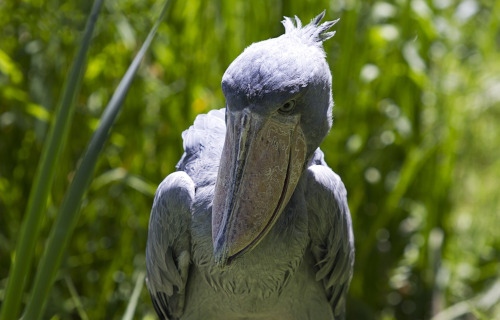
Shoebill Distribution, Habitat, and Ecology
Unfortunately for those who appreciate the amazing creatures of Nature, the Shoebill has a somewhat limited range of habitation. That’s due to the fact that it only appears to live in a small portion of one continent. Evidence indicates it once had a greater range, though.
The continent it appears on, however, likely comes as no surprise. That’s because it evolved as native to a small portion of the continent of Africa. Even there, though, its range remains limited. It only resides in the central tropical parts of that remarkable region.
More precisely, the fascinating bird lives in a range that begins in southern Sudan. From there, that zone extends through Congo, Rwanda, Uganda, and parts of Zambia and Tanzania. The majority of its population, however, lives in the West Nile sub-region.
In all regions it appears in, though, it displays strong preferences for its type of habitat. Due to those preferences, virtually all specimens appear in either areas of freshwater swamps or wetlands. It mainly prefers areas where the water’s poorly oxygenated.
The reason for that, though, lies in the nature of its diet. Like its numerous relatives, the Shoebill feeds as a carnivore. Its primary diet consists of various fish, with lungfish seemingy its favorite. The low levels of oxygen in the water force the fish to surface more often.
Individuals also lead a largely solitary life, except during breeding season. It’s also quite calm, often allowing humans to approach very close. It’s also most often silent, making little to any noise. The lone exception to this appears to be bill-clattering near the nest.
Hyacinth Macaw
Hyacinth Macaw Facts
- Our next choice for inclusion in this article about Earth’s Amazingly Abundant Avians is the dazzling animal understandably named the Hyacinth Macaw.
- The descriptive term used for it perfectly serves as one of the common names for a breathtaking variety of parrot. The beautifully colored avian also has another, less often used common name. That’s the similar term of the hyacinthine macaw.
- Its official scientific name, however, remains that of the extremely hard to pronounce term of Anodorhynchus hyacinthinus. By either of these names, though, it remains a most extraordinary, and visually distinctive, member of its particular genus.
- The first official recognition of the amazing animal as a separate and distinct species took place in 1790. This occurred at the hands of the respected English ornithologist, John Latham. At that time, however, he originally assigned it a different name.
- Quite sadly, its population numbers have plummeted dramatically in recent decades. Part of this occurred due to its popularity in the pet trade. Due to its greatly reduced numbers, the IUCN now lists it as Vulnerable on its Red List of Threatened Species.
- Luckily, the Hyacinth Macaw now enjoys some legal protection. It’s now covered by the Convention on International Trade in Endangered Species of Wild Fauna and Flora. Illegal collecting, however, still occurs within much of its native range.
- While the desire of humans to have it as a pet began the decline of its numbers, it now faces other perils. Habitat loss now forms a serious threat to it, given its natural range. The ongoing effects of climate change, though, now likely form its greatest threat.
Hyacinth Macaw Physical Description
Although perhaps best known for its great beauty, the Hyacinth Macaw stands out from its many related species for more than just that. It’s also extremely large for a parrot. In point of fact, this gorgeous bird ranks as the longest of all known types of parrot.
It’s not the heaviest, though. That distinction belongs to a flightless relative. Regarding its length, this avian attains an average length among mature adults of about 3.3 ft (1 m). This measurement extends from the top of its head to the tip of its large tail.
The stunning creature does not, however, display any noticeable degree of the physiological trait of sexual dimorphism. In this specific respect, it differs from many other birds. Thus, adults of both sexes reach the same average weight, that of 2.6 – 3.7 lb (1.2 – 1.7 kg).
The outward appearance of the Hyacinth Macaw, though, remains its most immediately obvious characteristic. Its feathers develop as completely blue, but lighter above than beneath. Yet it also has bright yellow rings around the eyes, and an area under the beak.
- Kingdom: Animalia
- Phylum: Chordata
- Class: Aves
- Order: Psittacifromes
- Family: Psittacidae
- Genus: Anodorhynchus
- Species: A. hyacinthinus
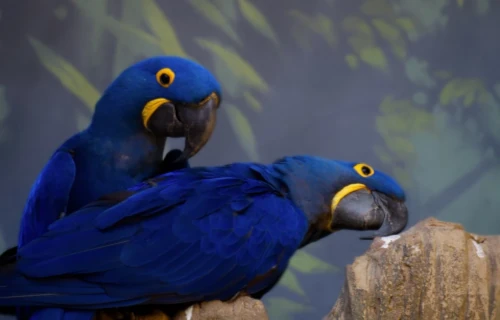
Hyacinth Macaw Distribution, Habitat, and Ecology
Most unfortunately, the awesome bird appropriately known as the Hyacinth Macaw only inhabits a small section of the world. Evidence indicates, though, that the beautiful bird once inhabited a significantly greater portion of its part of the world.
Currently, the vulnerable bird only appears in certain areas of the continent of South America. More precisely, known populations of the animal appear in the countries of Brazil, Paraguay, and Bolivia. But unfortunately, even there it mainly lives in scattered pockets.
This marvel of Nature also displays very strong preferences for its choice of habitats, as well as areas it avoids. Virtually all known individuals live in areas of either woodlands, palm swamps, and similar semi-open wooded areas. Meanwhile, it strictly avoids denser forests.
The Hyacinth Macaw evolved as entirely herbivorous in nature. Within its native range, its diet mainly consists of various nuts, such as Brazil nuts and macadamia nuts. Individuals also consume smaller quantities of such food as fruit, seeds, and other vegetable matter.
In temperament, it typically remains one of the gentlest and calmest of all related birds. Mated pairs usually nest between July and December, in a nest built either in a cavity of a tree, or on the face of a cliff. After mating, females generally lay 1 -2 eggs at a time.
Tufted coquette
Tufted coquette Facts
- The seventh species appearing in this listing of Earth’s Amazingly Abundant Avians is the tiny wonder known as the Tufted coquette.
- The appealing term we’ve applied here serves as the accepted common name for a particularly vibrant variety of hummingbird. Professional ornithologists, however, know it better by its scientific name. That’s the hard to pronounce Lophornis ornatus.
- By whatever name you know it, though, it stands out from the majority of its related species. It also does so for several reasons. For one, it’s among the smallest of its kind, though not the tiniest. That distinction belongs to the Bee Hummingbird.
- This truly remarkable small avian also distinguishes itself from its peers in terms of sheer appearance. It possesses one of the most striking color patterns of any similar animals. But this works to its advantage in its native habitat.
- Its first recognition as a separate and distinct species occurred in 1781. This listing of its special status arose from the work of the noted French naturalist, Georges-Louis Leclerc Comte de Buffon. It appeared in his Histoire Naturelle des Oiseaux.
- For the moment, this tiny marvel of Nature appears to be maintaining a sufficient and stable population. This holds true throughout the entirety of its native range. As a result, the IUCN now lists it as Least Concern on its Red List of Threatened Species.
- The gorgeous Tufted coquette nonetheless does face certain potential threats to its existence. Firstly, the nature of its natural territory renders it vulnerable to the perils of habitat loss. Secondly, though, its greatest threat lies in the effects of climate change.
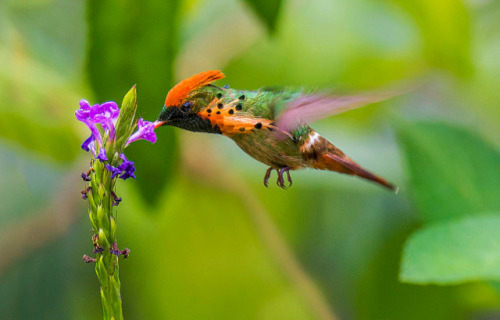
Tufted coquette Physical Description
The stunning Tufted coquette remains another of those creatures that prove that size has no bearing on beauty. Its appearance varies somewhat between the genders, however. That’s due to the fact that this bird displays a moderate degree of the trait of sexual dimorphism.
In the case of this specific bird, though, that principle manifests itself in ways other than sheer size. As a result, individuals of both sexes attain an average body length equaling roughly 2.6 in (6.6 cm). Each gender further averages around 0.08 oz (2.3 gm).
The gender-based differences appear in terms of physical attributes. That’s because the male has a rust-colored crest on its head that the female lacks. He also possesses small plumes of the same color projecting from his neck. The female however, lacks these as well.
Otherwise, both sexes of the Tufted coquette appear virtually identical. The upper portion of the body displays a coppery green, along with the stomach and forehead. The tail itself appears mainly a unique bronze-green. Precise shades in all areas vary by individual.
- Kingdom: Animalia
- Phylum: Chordata
- Class: Aves
- Order: Apodiformes
- Family: Trochilidae
- Genus: Lophornis
- Species: L. ornatus
Tufted coquette Distribution, Habitat, and Ecology
Fortunately for it and those who appreciate Nature, the Tufted coquette inhabits a broad range. That holds true when compared to related species, at least. That’s due to the fact that it evolved as native to a moderately wide area of the continent of South America.
More precisely, this magnificent bird inhabits the northern portions of that amazing continent. To the knowledge of researchers, it only lives in sections of four countries in that area. Those include the nations of Venezuela, Trinidad, Guiana, and northern Brazil.
Nevertheless, in all areas in which it appears, its populations remain quite scattered. Yet, thankfully, it appear to be adaptable. In fact, individuals make their homes in many different types of forests. Among these are regions of lowland and tropical rainforests.
Much like the many related birds, the stunning Tufted coquette mostly feeds on nectar. In its case, the animal feeds opportunistically on a wide range of flowering plants. But, it does show something of a preference for the blossoms of many flowering trees.
Individuals do occasionally modify their diet slightly, however. At such times, a few of them choose to also feed on various very small invertebrates. For the moment, the exact reason for this, much like some other facets of its life, continue to elude researchers.
After mating, the female constructs a small, cup-shaped nest. This she usually builds from down and twigs, and places on the branch of a tree. Uniquely, she almost always lays two eggs, with other numbers being exceeding rare. The reason for this also remains unknown.
Nicobar Pigeon
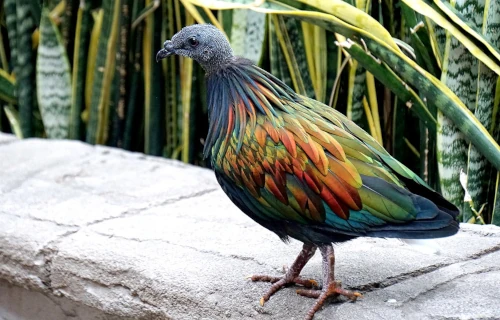
Nicobar Pigeon Facts
- Our next selection for inclusion in this collection of Earth’s Amazingly Abundant Avians is the brighly feathered Nicobar Pigeon.
- Perhaps most notably, the term it’s known by serves as the generally accepted common name of a highly distinctive species of pigeon. This truly amazing bird typically remains better known to researchers by its scientific name, however.
- That moniker, somewhat unfortunately however, is the comparatively difficult to pronounce term of the Caloenas nicobarica. Regardless of which of these names one uses to refer to it, though, the animal represents a legitimate wonder of Nature.
- This occurs partly due to one especially impressive statistic that’s not readily apparent. The animal constitutes the closest known remaining relative of two now extinct birds. More precisely, those birds were the Rodrigues solitaire, and the infamous dodo.
- Incredibly, the first known sighting of the remarkable bird by someone from outside of its native range only occurred in 1738. That’s because, at that time, the respected English naturalist Eleazar Albin made note of the distinctive animal.
- The first official recognition of the colorful Nicobar Pigeon as a separate and distinct species, however, took place in 1758. At that time, the renowned Swedish naturalist Carl Linnaeus noted the fascinating bird in his updated Systema Naturae.
- In modern times, the IUCN now lists it as Near Threatened, on its Red List of Threatened Species. For the moment, though, the animal faces several threats. Its most pressing danger nonetheless likely comes in the form of ongoing climate change.
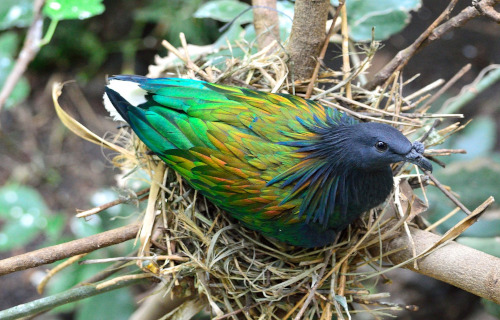
Nicobar Pigeon Physical Description
Obviously, the visually magnificent Nicobar Pigeon qualifies as an impressive form of pigeon. But, it does so for more than just its quite distinctive appearance. That holds true due to the fact that the beautiful bird also ranks as one of the larger known varieties of pigeon.
In addition to this, like many related creatures, it displays a moderate degree of the physiological trait of sexual dimorphism. In this specific case, however, that characteristic most notably manifests itself in terms of the sheer physical size of the creature.
That holds true because of the fact that males of the species attain a slightly greater average size than the females do. Nonetheless, an overall average mature adult of this stunning species equals a remarkable body length measuring approximately 16 in (40 cm).
Otherwise, both genders of the Nicobar Pigeon appear the same. The tails develops as short, and a white in color. The head appears gray, and the upper feathers change to a green and copper-like hue. The rest of the body typically presents varying shades of metallic green.
- Kingdom: Animalia
- Phylum: Chordata
- Class: Aves
- Order: Columbiformes
- Family: Columbidae
- Genus: Caloenis
- Species: C. nicobarica

Nicobar Pigeon Distribution, Habitat, and Ecology
Quite unfortunately, the uniquely gorgeous bird known as the Nicobar Pigeon inhabits a relatively scattered range of the world. That holds true because, though its habitation range covers a reasonably moderate area, it only appears in isolated concentrations.
As its name implies, its greatest concentration appears in the Nicobar Islands, which forms a part of the country of India, in Asia. Other concentrations of its population also appear along mainland India, in the Malay Peninsula, the Solomon Islands, and Palau.
Given its range, its preferred habitat likely comes as no surprise. In point of fact, it appears almost exclusively in regions of tropical rainforest. Within this range, with the exception of those along the continental coast, the animal migrates from island to island.
The gorgeous Nicobar Pigeon evolved a diet similar to many, though not all, pigeons. In its specific case, the magnificent bird feeds primarily on a combination of fruit, buds, and seeds. The animal is also attracted to any area where sufficient grain is readily available.
Black-and-white hawk-eagle
Black-and-white hawk-eagle Facts
- The ninth winged wonder showing up in this gathering of the Amazingly Abundant Avians of the World is the startling creature named the Balck-and-white hawk-eagle.
- The distinctive, if quite long, term applied to it serves as the common name of a visually remarkable avian species. This magnificent bird also bears the somewhat cumbersome scientific name of the Spizaetus melanoleucus, however.
- The noted French ornithologist Louis Jean Pierre Vieillot holds the distinction of many firsts. Among these is the fact that he represented the first scientist to officially describe the species. This fortuitous action further occurred in the year 1816.
- Unfortunately, despite its numbers and range, a sad fact remains. In point of fact, researchers still know very little about certain aspects of the life of this bird. This lack of information holds especially true in regards to its breeding habits.
- The visually striking creature also represents a source of some confusion in scientific circles. This holds true due to a most uncommon set of circumstances. That consists of the fact that it has been moved from one genus to another several times.
- For the moment, the IUCN lists the Black-and-white hawk-eagle as Least Concern. This listing appears in its Red List of Threatened Species. That status, though, could easily change in the near future, as conditions appear to be changing rapidly.
- For one thing, its population numbers currently appear to be diminishing. This situation also lamentably extends throughout the entirety its natural range. Not surprisingly, the effects of ongoing climate change likely form its greatest threat.
Black-and-white hawk-eagle Physical Description
The gorgeous Black-and-white hawk-eagle merits attention for more than just its size. In point of fact, the bird ranks as an average-sized raptor. Like many related species, this animal displays a moderate degree of the physiological trait of sexual dimorphism.
In the case of this particular creature, this characteristic manifests itself in the fact that some females attain a slightly larger average weight. The species as a whole develops respectable measurements. Adults reach an average body length of about 20 – 24 in (50 – 60 cm).
A typical wingspan for both genders, furthermore, equates to roughly 46 in (117 cm). Weight, though, remains where the genders differ slightly, overall averages remain approximately equal. To be precise, a typical weight equals roughly 1.88 lb (0.85 kg).
In terms of appearance, however, no gender-based differences appear. In point of fact, both sexes of the remarkable Black-and-white hawk-eagle remain virtually indistinguishable. As the common name suggests, the basic color scheme appears as black and white.
This pattern of colors, meanwhile, generally presents itself with the body, neck, and head being white in color. The wings of the magnificent bird display a dark black, along with a lone black spot on the top of the head. But the tail shows brown with dark gray.
- Kingdom: Animalia
- Phylum: Chordata
- Class: Aves
- Order: Accipitriformes
- Family: Accipitridae
- Genus: Spizaetus
- Species: S. melanoleucus
Black-and-white hawk-eagle Distribution, Habitat, and Ecology
Despite not being widely known, the sincerely extraordinary Black-and-white hawk-eagle inhabits a fairly broad swathe of the world. That holds true due to the fact that the remarkable animal inhabits portions of both North America and South America.
Impressively, that native territory does not simply entail minor regions of the two continents. More precisely, the fascinating bird appears as far north as southern Mexico. However, its known endemic range also extends as far south as the country of Argentina.
Within this wide range, though, it possesses highly specific requirements. That holds true since it only inhabits specific habitat types. These consist of lowland forests of any type. While it does inhabit highly humid and dense forests if it must, these are not preferred.
The physically impressive bird has even more decidedly precise preferences for where it makes its home. It only inhabits such regions that appear at lower altitudes, unless forced to relocate there. This marvel of Nature also prefers regions with close-packed canopies.
Like other raptors, the stunning Black-and-white hawk-eagle evolved to feed exclusively as a carnivore. Although it hunts opportunistically, it does, like most animals, have preferred prey. These primarily consist of various toads, small mammals, and lizards.
One more unusual factor about its nature remains, though. To the surprise of many researchers, a large percentage of its diet also consists of various types of small birds. Although certain animals prey on its young in the nest, adults have few natural predators.
Guinan cock-of-the-rock
Guinan cock-of-the-rock Facts
- Our next entry into this article about Earth’s Amazingly Abundant Avians holds the distinctive title of the Guinan cock-of-the-rock.
- The informative term it’s listed by here serves as the most frequently used common name for this avian marvel. It does hold at least one other general title, though. That’s the less used, yet very similar, term of Andean cock-of-the-rock.
- Within the scientific community, though, the animal is typically much more often referred to by its formal name. Thankfully, that’s a comparatively simple term, and even a mildly poetic one, for the layperson to pronounce. That’s the title Rupicola rupicola.
- It received that distinctive appellation due to the efforts of the highly esteemed Swedish botanist and zoologist, Carl Linnaeus. He accomplished the first official recognition of it as a separate and distinct species. That noteworthy event occurred in 1766.
- This astonishing bird also stands out from other avians in yet another manner. That’s because this particular species represents one of only two in its entire genus. Both unusual names reflect the nesting habits of the remarkable bird.
- Pleasantly, the incredible Guinan cock-of-the-rock appears to have a relatively stable population base. That also seems to hold true throughout its natural range. Therefore, the IUCN presently lists the remarkable bird on its Red List as Least Concern.
- Nevertheless, like many other species, the magnificent songbird faces several possible threats to its continued existence. Most of these stem from the actions of humans. They include habitat loss and the potential threat of climate change in the near future.
Guinan cock-of-the-rock Physical Description
The remarkable bird known commonly as the Guinan cock-of-the-rock immediately captivates those who encounter it. It principally does so due to its unique appearance, however. That’s true since it represents a roughly average-sized variety of songbird.
In that particular regard the intriguing creature follows a pattern common to its kind. Much like a great many species of avian, this marvelous animal displays a moderate degree of the physiological characteristic known as sexual dimorphism.
In the case of this specific species, however, that trait presents itself in two different fashions. The females of the fascinating species attains a slightly larger overall size than their male counterparts. This gender attains an average length of roughly 12 in (30 cm).
The males of the species typically remain slightly smaller. They also differ from the females in terms of color patterns. The larger, half-moon crest of the male displays a bright orange color. By contrast, the crest of the female remains a dark brownish-gray in color.
In fact, she typically presents that color over the entire body. But the male has an orange body, a black-tipped tail, and black, white, and orange wings. In all other ways, though, both genders of the amazing Guinan cock-of-the-rock appear quite similar.
As is clearly visible, the general body shape of both genders develops as comparatively stocky in form. Augmenting the visual distinctiveness, both sexes possess bright orange colored legs and skin. Not stopping there, both genders possess an orange iris in the eyes.
- Kingdom: Animalia
- Phylum: Chordata
- Class: Aves
- Order: Passeriformes
- Family: Cotingidae
- Genus: Rupicola
- Species: R. rupicola
Guinan cock-of-the-rock Distribution, Habitat, and Ecology
Most regrettably, the Guinan cock-of-the-rock evolved as endemic to an extremely small portion of the globe. The general area in which it appears is well known for its abundance of amazing flora and fauna. That region thus likely won’t surprise many of our readers.
The very name of the beautiful animal provides a clear indication of where it makes its home, though. That’s because the animal lives in a region known to scientists as the Guinan Shield. This represents a geological section of the continent of South America.
This magnificent bird inhabits an area that includes the countries of Suriname, French Guiana, Guyana, Venezuela, Colombia, and part of Brazil. Within that comparatively large habitat range, the amazing creature has decided preferences for its choice of habitat.
In fact, these rank as extremely specific, and therefore limiting. It mainly appears in very humid forests. The bird also requires the presence of numerous rocky outcroppings. Even within these, it only lives in such areas at altitudes between 980 – 6,560 ft (300 – 2,00 m).
Again distinguishing itself from similar species, this marvelous avian prefers to make its nests in rocky regions, instead of in trees. From there, it breeds early in the year, following which the female lays 1 -2 eggs. These typically require 27 – 28 days on incubation.
Mature adult specimens of the astounding Guinan cock-of-the-rock have a diet consisting primarily of fruit. This also follows a pattern common to its related species. The remainder of its diet consists of various insects, frogs, snakes, and lizards.
Pesquet’s Parrot
Pesquet’s Parrot Facts
- Now showing in the eleventh spot in this compendium of Earth’s Amazingly Abundant Avians we give you the intriguing animal named the Pesquet’s Parrot.
- It’s immediately obvious to the astute observer that the amazing winged wonder represents an extremely unique variety of parrot. That physical uniqueness, however, actually extends to much further areas than just its sheer physical appearance.
- The incredible bird actually represents the sole occupant of both an entirely separate genus and subfamily, within the Family Psittrichasiidae. This different type of parrot also remains renowned among related species for its truly distinctive sounds.
- Its common call strikes most individuals who hear it as quite rasping in nature. But, it also has the tendency to frequently emit a long, drawn out scream while in flight. As a result, it also goes by the alternate common name of the vulturine parrot.
- This remarkable avian now finds itself in extreme danger, however, due to a combination of several factors. For the moment, its population appears to be decreasing in direct proportion to the rate of ongoing habitat loss, not surprisingly.
- Since the remarkable Pesquet’s Parrot had a limited range to begin with, it remains especially vulnerable. The ever-increasing effect of climate change also poses a severe threat to the bird. For these reasons, the IUCN currently lists it as Vulnerable.
Pesquet’s Parrot Physical Description
Perhaps most notably, its appearance and sounds do not constitute the only distinctive characteristics of the incredible Pesquet’s Parrot. That holds true due to the fact that, in addition to its other traits, it also forms a slightly larger than average type of parrot.
The remarkable bird also displays a mild degree of sexual dimorphism, much like many related species. In its particular case, however, the impressive animal does so with a very small, and quite easily overlooked difference in visual appearance.
A small red spot appears behind each eye on the male, but not the female. In every other way, the two genders present identical physical appearances, including having a comparatively small head. Firstly, it attains an average overall length of about 18 in (46 cm).
Secondly, adults typically reach a weight of between 24 – 28 oz (680 – 800 gms). Its wings generally present as black, with dark gray scaling. Also, it usually has a bright red chest and abdomen. It also has a large black beak, with the combination creating a striking appearance.
- Kingdom: Animalia
- Phylum: Chordata
- Class: Aves
- Order: Psittaciformes
- Family: Psittrichasiidae
- Genus: Psitrichas
- Species: P. fulgidus
Pesquet’s Parrot Distribution, Habitat, and Ecology
Quite unfortunately, the astonishing Pesquet’s Parrot remains native to only a tiny part of the world. This range consists of only certain portions of Papua New Guinea, near Australia. It’s unknown to researchers if it ever possessed a greater range of habitation.
But, even within this already limited area, it displays clear preferences for its habitat. The avian only inhabits specific regions of the local rainforest. Here, this absolutely amazing variety of parrot appears at altitudes ranging from 328 – 5,905 ft (100 – 1,800 m).
The fascinating bird also distinguishes itself from related species in yet another manner. That holds true due to the nature of its diet. Most known varieties of parrot feed as omnivores. Surprisingly, however, this animal evolved as a highly specialized frugivore.
In point of fact, the avian feeds almost exclusively on a few types of figs native to its habitat. The precise reason for this adaptation currently eludes researchers. But, the confusing variety of parrot does occasionally consume small quantities of flowers and nectar.
The truly fascinating creature possesses even more intriguing aspects to its nature than these facts, however. The distinctive bird also evolved a strongly nomadic pattern of behavior. It does this in accordance with the availability of fruits, as the seasons change.
Researchers think that the unusual lack of feathers on the head of the Pesquet’s Parrot developed as an adaptation for a surprising reason. Nature designed this attribute to prevent complications with feathers from the juice of the fruit it consumes.
Unfortunately, experts still know very little about its mating habits in the wild. It appears to generally live in small groups of up to 20 individuals. Following mating, the female places her eggs in a large nest in a hollow tree. A typical lifespan in the wild is about 9 years.
Harpy Eagle
Harpy Eagle Facts
- Next up amid our choices for making this list of Earth’s Amazingly Abundant Avians comes the physically impressive animal named the Harpy Eagle.
- The magnificent bird shown here presently ranks as the largest and most powerful of all known types of eagles living in a rainforest. This huge and truly stunning variety of raptor also ranks as one of the largest species of eagle found anywhere on earth.
- Some confusion does surround the animal, however, in regards to its common name. Some refer to it as the American harpy eagle. This occurs due to the desire to avoid confusing it with another species of eagle inhabiting the same habitat range.
- Quite unfortunately, the IUCN now lists this incredible bird as Near Threatened on its Red List of Threatened Species. This lamentable fact occurs due to a combination of factors. Chief among these is the ongoing destruction of much of its natural habitat.
- In fact, in parts of the range it previously inhabited, the gorgeous animal has now disappeared entirely. In addition to this, the magnificent bird known as the Harpy Eagle also faces various other threats to its continued existence.
- Even in the regions it still appears in, its numbers appear to be reduced. The fabulous bird also faces the same dire threat as many other species around the world today. This consists of the ongoing threat of climate change, which looms over countless species.
Harpy Eagle Physical Description
The truly stunning Harpy Eagle possesses an extremely visually striking physical appearance. This easily sets it apart from related species. This statement holds true for several reasons. Its sheer physical size only represents one of these factors, however.
But, as remains true of many species, this bird displays the trait of sexual dimorphism. In its case, though, this means that the female of the species reaches a significantly greater size than her male counterpart. Both genders also have the largest talons of any type of eagle.
The female of the marvelous species, usually being the larger of the two, typically attains a maximum body length measuring about 3.5 ft (1.07 m). The smaller male of the species pales in comparison. He rarely exceeds a body length of 2 ft 10 in (86.5 cm).
The impressive females further attain a much greater mass than the males. The body weight of the female achieves an average totaling as much as 18. 3 lb (8.3 kg). Yet the males, however, only reach a maximum known weight of 13.1 lb (5.95 kg), and average much less.
Both genders of the Harpy Eagle do share many characteristics. This includes displaying the same overall physical appearance. The upper portions of the body present dark black feathers. Yet, the underside of the bird remains primarily white in color.
The exception to this tendency is that of the presence of thin black stripes on each of its legs. But, the remarkably majestic head displays a pale gray color, along with a double crest. Finally, the upper side of the tail shows a black color, with three gray stripes.
- Kingdom: Animala
- Phylum: Chordata
- Class: Aves
- Order: Accipitriformes
- Family: Accipitridae
- Genus: Harpia
- Species: H. harpyja
Harpy Eagle Distribution, Habitat, and Ecology
The native habitat range of the magnificent Harpy Eagle measures quite extensive. In point of fact, it extends from Mexico, in North America, to Argentina, in South America. In the country of Mexico, though, the fabulous creature appears to be nearly extinct.
Very sadly, though, this marvelous bird continues to have a thinly scattered population. This lamentable fact further apparently holds true throughout the entirety of its known range. The loss of much of its native habitat negatively impacts it as much as other species.
The animal additionally has a very specific type of region in which it makes its home. The majestic predator primarily inhabits regions of lush tropical rainforests. Not surprisingly, then, the majority of its numbers appear in this habitat in the country of Brazil.
The bird also requires a very particular range of height above sea level for its range. Most individuals, live in areas with an elevation lower than 3,000 ft (900 m). Scattered individuals do appear at altitudes of as much as 6,600 ft (2,000 m), in areas of similar vegetation.
The powerful Harpy Eagle still remains one of the top predators in every area it lives in. Its prey, furthermore, mainly consists of various tree-dwelling mammals. Yet, it also occasionally hunts such animals as squirrels, porcupines, and opossums, to name a few.
More precisely, however, sloths and monkeys comprise the majority of its food supply. In this respect, its great size and power provide it with a significant advantage. Meanwhile, the deadly creature itself understandably has very few natural predators.
Inaccessible Island Rail
Inaccessible Island Rail Facts
- Here, in the thirteenth spot in this article about Earth’s Amazingly Abundant Avians is the reclusive marvel known as the Inaccessible Island Rail.
- The attention-grabbing term we’ve used for it herein serves as the most frequently used name for a remarkable bird. For the moment, it does not possess any other broadly used general title. While that’s not unknown, it’s somewhat uncommon.
- Among scientific professionals, however, it’s typically better known by its formal name. Like many such appellations, though, that’s relatively difficult for the layperson to pronounce. That’s because it holds the technical moniker of Laterallus rogersi.
- It received that formal title due to the efforts of the British physician and ornithologist, Percy Lowe. He accomplished the first official recognition of the animal as a separate and distinct species. That scientifically noteworthy action occurred in 1923.
- A scientific expedition to the island noted the bird roughly 50 years before, but no formal study took place. Indigenous Peoples of other islands long visited the site to hunt seals prior to this date, but it’s unknown if they ever noted the remarkable avian.
- Unfortunately, the fabulous Inaccessible Island Rail finds itself in relatively dire straits. It has a steady population, but only a limited range. Due to that limited territory, along with other factors, the IUCN presently lists this species as Vulnerable on its Red List
- Currently, it enjoys a reasonable security, since tightly limited access to its location prevents the introduction of non-native species. Yet it remains especially vulnerable to the danger of climate change due to the nature of its specific situation.
Inaccessible Island Rail Physical Description
The extraordinary Inaccessible Island Rail immediately captures the attention of those few fortunate enough to visit it. Yet it does so not simply because of its unique appearance. It also merits notice given the fact that it’s one of only 60 known flightless birds.
Perhaps the most notable thing about the wonderful creation of evolutionary processes is simply its physical size. That’s because, overall, the fascinating species attains an average body length only measuring approximately 5.1 – 6.1 in (13 – 15.5 cm).
Thus it earns its impressive status as the smallest bird of its kind presently known to man. But, like many birds, the tiny wonder also displays a moderate degree of sexual dimorphism. In the case of this particular species, that presents itself in terms of body mass.
More precisely, the males attain a greater average weight than their female counterparts. These reach masses typically ranging from 1.2 – 1.7 oz (35 – 49 gms). Females, however, generally weigh 1.2 – 1.5 oz (34 – 42 gms). So the difference remains relatively minor.
The Inaccessible Island Rail also displays an appealing color scheme. Individuals typically present a chestnut-brown on the upper body, with dark gray on the head on lower regions. Nature did not simply stop there, though, when providing it a visual appeal.
This biological marvel also possesses scattered small streaks of white on the stomach and flanks. While present, its wings obviously remain too small for flight. Its tail evolved as comparatively short, as well. The eyes also stand out, displaying a brilliant shade of red.
- Kingdom: Animalia
- Phylum: Chordata
- Class: Aves
- Order: Gruiformes
- Family: Rallidae
- Genus: Atlantisia
- Species: A. rogersi
Inaccessible Island Rail Distribution, Habitat, and Ecology
The truly remarkable Inaccessible Island Rail inhabits an extremely restricted range. The nature of that location is suggested by its name, of course. But the precise location of that zone of habitation might surprise many people who learn of the amazing bird.
That’s because this bird only inhabits the tiny island its name derived from, Inaccessible Island. This itself forms part of the Tristan da Cunha group, located in the South Atlantic Ocean region. It’s roughly 19 mi (31 km) from the main island of the arcgipelago.
Although the extremely small island remains uninhabited by man, it makes an excellent home for this species. The interesting animal also proves itself to be highly adaptable, at least within its native range. Nature thus provided it with an evolutionary advantage.
This fact holds true because it lives in almost all the various habitat types found on the island. But its greatest population density occurs in regions of native tussock grass, mixed with sedges and ferns. It also has a preference for areas of pure tussock as well.
Yet, this wonderful fauna also lives in regions of both forest and heath. Impressively, this animal lives at all altitudes on the island, ranging from sea level up to 1,473 ft (449 m). There, the amazing Inaccessible Island Rail feeds as a technically omnivorous species.
While it does consume various berries and seeds occasionally, it primarily hunts live prey. This typically consists of amphipods, earthworms, mites, and a wide variety of local insects. However, it does not appear to feed on carrion, as some related species do.
Victoria Crowned Pigeon
Victoria Crowned Pigeon Facts
- Here, in this collection of the Amazingly Abundant Avians of the World we give you the visually impressive creature known as the Victoria Crowned Pigeon.
- Most impressively, the truly awesome bird presented here ranks as the largest known type of pigeon in the world. This remarkable avian also represents one of only four unique, and also comparatively quite large, species of pigeon in its genus.
- Within the scientific community, the animal holds a much different title, though. Thankfully, that’s a significantly simpler term for the layperson to pronounce than most such names. That’s because the bird holds the technical moniker of Goura victoria.
- The truly distinctive creature also happens to share a relatively unusual trait with the other members of its genus. That’s because, like them, this fascinating and amazing variety of pigeon actually spends the great majority of its life on the ground.
- Individuals of this species will, however, take flight if sufficiently disturbed. But, that flight typically only extends as far as the nearest tree canopy. There, the fascinating animal usually just takes shelter for as long as necessary, often making raucous noises.
- The Victoria Crowned Pigeon now faces the threat of extinction. This occurs primarily due to a combination of habitat loss and hunting. Its population now numbers fewer than 20,000 individuals, thus the IUCN now lists the animal as Near Threatened.
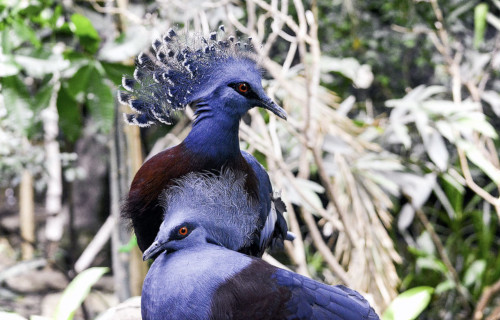
Victoria Crowned Pigeon Physical Description
The dazzling Victoria Crowned Pigeon almost instantly captures the attention and imagination of those who view it. Yet it doesn’t simply do so due to one characteristic. That’s true since, unlike many birds, it stands out because of both its appearance and size.
This is true given the fact that this wonder of Nature and evolution truly forms a giant of its kind. That’s because this breathtaking bird averages a remarkable body length equaling about 30 in (75 cm). This also holds true for individuals of both male and female.
Exceptional individuals do nevertheless occur, though. This happens regardless of the sex of the specimen. In length, these outstanding examples sometimes reach 31 in (80 cm) in length. These individuals also weigh as much as 7.7 lb (3.5 kg).
Yet its sheer size isn’t the only remarkable trait of the Victoria Crowned Pigeon. Quite uniquely, it also boasts a gorgeous feather crest. This also typically presents a brilliant blue in color, with the ends of the feathers commonly being tipped in a bright white.
The body itself most often presents a deep gray-blue in color, and a small black mask-like feature also appears on the face. The wings display a lighter shade of blue, with conspicuous maroon colored tips. In all ways, the bird displays no noticeable sexual dimorphism.
- Kingdom: Animalia
- Phylum: Chordata
- Class: Aves
- Order: Columbiformes
- Family: Columbidae
- Genus: Goura
- Species: G. victoria
Victoria Crowned Pigeon Distribution, Habitat, and Ecology
Like numerous other species, the magnificent Victoria Crowned Pigeon only inhabits a very limited area. In its case, that zone mainly consists of the northern sections of New Guinea, near Australia. However, it also inhabits a few small neighboring islands.
Even within this already limited range, this fabulous bird usually only appears in specific habitat types within the region. These mainly include areas of lowlands and swamp forests, but the bird will also sometimes appear in regions of sago forests.
Interestingly, it also most commonly lives either near or at approximate sea level. Some individuals, though, will occasionally appear at altitudes of as much as 3,000 ft (914 m). These specimens, though, usually have only ventured to the area temporarily.
Much like its numerous related species around the world, the beautiful Victoria Crowned Pigeon evolved as a highly gregarious animal. Because of this, the bird rarely moves alone. Most often, it travels in small groups, at a slow pace, along the floor of the forest.
Although it primarily eats fruit, it also feeds on small invertebrates and seeds on occasion. Its favorite fruit consists of figs, though it will consume other fruit if readily available. Seeds and invertebrates it consumes opportunistically, with no noticeable preference.
Bald Eagle

Bald Eagle Facts
- Placing in the fifteenth spot in this article about the Amazingly Abundant Avians of the World, the majestic Bald Eagle does so only due to random selection.
- The term given to it serves as the common name for an incredibly majestic bird that technically classifies as a sea eagle. This proud and magnificent avian also goes by the very difficult to pronounce scientific name of the Haliaeetus leucocephalus.
- By either name, however, this animal currently remains the only known variety of sea eagle native to its particular portion of the world. Modern science also currently recognizes two known subspecies of this incredible bird still in existence.
- Somewhat ironically, despite its now quite famous name, the breathtaking animal isn’t actually bald at all. This misconception occurs because the name derives from a much older term. That original term actually means white-headed.
- Most fortunately, the population of the stunning Bald Eagle appears to be both sufficient and stable. That condition also appears to hold true throughout the entirety of its natural range. This fortunate situation was not always the case, however.
- In the past, the breathtaking raptor nearly became extinct, before humans implemented protective measures. Thankfully, though, it now holds the status of Least Concern with the IUCN. The creature still faces the threat of climate change, though.
Bald Eagle Physical Description
Most notably, the gorgeous Bald Eagle displays the physiological characteristic of sexual dimorphism. That remains a characteristic shared by many of its related species, though. In its case, however, this trait presents itself as a matter of size.
That holds true due to the fact that the females of the species average about 25% larger than the males. These physically larger females further weigh as much as 14 lb (6.3 kg). In addition to this, exceptional females sometimes even attain a wingspan of 7.5 ft (2.3 m).
The plumage of the creature also continues to be one of its most striking features. This trait presents as a distinctive combination of dark brown on the body, and white on the head and tail. That combination has served to make it one of the most recognizable birds on earth.
The eyes, beak, and feet of the majestic Bald Eagle further show a bright yellow in color. The powerful talons also develop large and razor-sharp, as with most raptors. Not only that, the Bald Eagle possesses the ability to retract its talons at will, but rarely chooses to do so.
- Kingdom: Animalia
- Phylum: Chordata
- Class: Aves
- Order: Accipitriformes
- Family: Accipitridae
- Genus: Haliaetus
- Species: H. leucocephalus
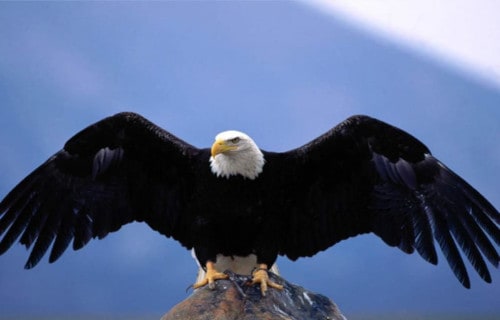
Bald Eagle Distribution, Habitat, and Ecology
The range of the Bald Eagle remains extensive in nature. The beautiful creature inhabits most of North America. This extends from northern Mexico, to all of the continental United States. It also inhabits temperate portions of Alaska, and most of the country of Canada.
Fortunately, this particular avian has a decided advantage over some competitors. It quickly proved itself to be highly adaptable to a variety of habitat types. Due to this trait, it can, and often does, live in bayous, deciduous forests, and even the Sonoran Desert.
The beautiful animal additionally holds yet another distinction. It generally prefers to build its large nests in the tops of the tallest trees near a body of water. In fact, the amazing avian holds the distinction of building the largest nest of any bird in its range.
In point of fact, these constructions hold a place in the record books. Its constructions remain the largest arboreal nests of any known animal. These may be as much as 13 ft (4 m) deep, 8.2 ft (2.5 m) wide. Quite amazingly, each can also weigh up to 2,000 lb (907 kg).
Much like related species, the fabulous Bald Eagle evolved to feed entirely as a carnivore. It also feeds opportunistically, consuming a wide variety of prey. The majority of the prey of most individuals, though, remains comprised of numerous types of locally available fish.
The awesome bird remains fascinating for one more reason. Individuals of this species also typically mate for life. When the tiny offspring arrive, both parents care for the young, unlike some birds. Finally, this breathtaking bird can live up to 20 years in the wild.
Little Penguin
Little Penguin Facts
- The next wonder of Nature showing up in this articles about the Amazingly Abundant Avians of the World is the memorable Little Penguin.
- The simple term we’ve used serves as the most frequently used english language name for this miniature marvel of Natue. The lovely bird has a few others, however. These include the equally descriptive titles of blue penguin and little blue penguin.
- Two local populations of Indigenous Peoples, though, have still other appellations for it. In the native tongue of the Maori, it’s named the kororā. But the Boonwurrung language refers to the wonder of evolution by the name Djinan Yawa-dji Goyeep.
- Within scientific circles it’s most often referred to by yet another moniker. That’s a moderately challenging title for the layperson to pronounce, though. That’s because this flightless variety of bird bears the technical name of Eudyptula minor.
- It received that particular name due to the efforts of the respected German naturalist, Johann Reinhold Forster. He accomplished the first official recognition of it as a separate and distinct species. That noteworthy event took place in 1781.
- Thankfully, the Little Penguin appears to be maintaining a population base that’s both stable and sufficient. That pleasant trend also seems to hold true throughout its entire range. The IUCN thus currently lists it as Least Concern on its Red List.
Little Penguin Physical Description
First and foremost, the wonderful Little Penguin clearly lives up to its most often used common name. That holds true due to the diminutive size of the remarkable animal. In its case, both genders attain roughly the same average height and weight.
The beautiful creature does follow a pattern common to its kind. That’s in the fact that it displays a certain degree of the physiological characteristic of sexual dimorphism. In this specific instance, however, that has nothing to do with general size of patterns of color.
Individuals of both genders attain the same approximate physical measurements in their body. Males and females alike reach an average length of only 13 in (33 cm). Both sexes also grow to weights only averaging about 3.3 lb (1.5 kg). It’s the smallest of its kin.
This marvel of Nature presents a striking and unique pattern of coloring. In most specimens, this includes the head, wings, and back presenting a distinctive blue shade. Yet the front of the animal differs. This portion of the body displays a relatively bright shade of white.
The Little Penguin additionally manifests patches of a light gray surrounding the ears. These themselves develop as compartively small. The feet also present a distinctive appearance. These show a light pink on the upper side, while the soles present a deep black.
The gender-based physical difference in the species shows itself in an unusual manner and location. Between the genders, the bill that both possess attains different lengths. Those of the females of the species remain slightly shorter than those of the males.
- Kingdom: Animalia
- Phylum: Chordata
- Class: Aves
- Order: Sphenisciformes
- Family: Spheniscidae
- Genus: Eudyptula
- Species: E. minor
Little Penguin Distribution, Habitat, and Ecology
The remarkable Little Penguin inhabits a hard-to-define region of the globe. That’s because its zone of habitation is broken and somewhat widely dispersed. Though it appears across a broad range, it only lives in widely scattered groupings within that.
The majority of its numbers make their home in the country of New Zealand. The next largest known concentration of the flightless wonder lives in certain sections of Australia. Yet small populations also appear in such places as Chile and even South Africa.
Wherever it appears, though, the bird displays decidedly strong preferences in terms of its habitat selection. In all areas where it lives, it appears almost exclusively along the immediate coastline. It does live slightly further inland on a few tiny islands, however.
Like all known varieties of penguin, the aptly-named Little Penguin evolved an entirely carnivorous diet. Also mirroring related species, this mainly consists of various small species of fish. However, it also dines on the occasional small crustacean and cephalopod.
Despite its small size and apparent vulnerability, the remarkable animal itself has very few known natural predators. The few species known to hunt it include sea eagles and long-nosed fur seals. It’s probable, though, that it has others that are simply unknown to us.
Yellow-Eyed Penguin
Yellow-Eyed Penguin Facts
- Our seventeenth choice for inclusion in this collection of Amazingly Abundant Avians of the World bears the understandable moniker of the Yellow-Eyed Penguin.
- The descriptive term applied herein represents the most frequently used common name for this remarkable avian. The unique and gorgeous flightless bird does have a few other general titles, though. Those include the terms tarakaka and hoiho.
- Most notably, but truly unfortunately, the fully stunning creation of Nature and evolution holds a very special status. That holds true due to the lamentable fact that the beautiful animal now ranks as one of the rarest varieties of penguin in the world.
- Regardless of its scant numbers, however, this amazing creature does have one thing working in its favor. The amazing bird actually has one of the longest natural lifespans of any related species. Individuals have the ability to live more than 20 years.
- Sadly, though, few individuals succeed in reaching this age, due to a wide variety of reasons. Unpleasantly, many of these reasons do not represent part of its natural environment. Yet these remain the same as those many species now face.
- More specifically, the animal principally faces two threats in particular. The primary threats that the magnificent creature faces include habitat degradation, for one. But the marvel also suffers from the introduction of non-native predators.
- Lamentably, due to all these factors, it now has a very small estimated remaining population. This consists of fewer than 4,000 individuals. Quite understandably, because of this sad state of affairs, the IUCN now lists it as Endangered on its Red List.
Yellow Eyed Penguin Physical Description
The magnificent Yellow Eyed Penguin certainly captures the attention and imagination of those who encounter it. It typically does so, however, largely because of its distinctive appearance. Rarely does size play a role in this, because in that respect it’s roughly average.
It does follow one pattern that’s quite common among its many relatives, though. That’s in the fact that it displays a certain amount of the physiological characteristic of sexual dimorphism. In its particular case, this trait manifests itself in terms of physical dimensions.
That’s due to the fact that males of the remarkable avian attain a greater average size than their female counterparts. As a general rule, though, the difference remains slight. Intriguingly, for undetermined reasons, males also tend to have a longer lifespan the females.
Overall, individuals of the aptly-named Yellow Eyed Penguin normally reach heights measuring between 24 – 31 in (62 – 79 cm). The weights tend to vary significantly, though, depending on the time of year. In general, this ranges between 6.6 – 18 lb (3 – 8 kg).
Its most distinguishing feature is obviously its eyes. These develop as bright yellow, and clearly serve as the inspiration for the name. Added to this uniqueness, however, is the black back, pale yellowish head, and a multi-colored beak with a randomly varying patterns.
- Kingdom: Animalia
- Phylum: Chordata
- Class: Aves
- Order: Sphenisciformes
- Family: Spheniscidae
- Genus: Megadyptes
- Species: M. antipodes
Yellow Eyed Penguin Distribution, Habitat, and Ecology
Unfortunately, the fabulous Yellow Eyed Penguin evolved as endemic to only a severely limited section of the world. It’s a region of the globe well known for other wonders. The precise location of that zone of habitation will probably surprise a few people, though.
Remarkably, this marvel of evolution only lives in selected portions of the the country of New Zealand. This area includes South Island, but only the southeastern portion. It also appears on parts of the islands of Auckland and Campbell, and coastal areas of Stewart.
It also evolved decidedly strong preferences regarding its choice of habitat. Most examples prefer to make their homes in regions comprised largely of either forest or scrub. It further displays a fondness for gentle slopes, the shore itself, or in small bays and headlands.
Again following the pattern shared by its relatives, the Yellow Eyed Penguin developed as a pure carnivore. Its diet primarily consists of small fish it catches near the seafloor. It does, however, occasionally augment this with various smaller cephalopods that it catches.
Breeding typically takes place in August, with eggs being laid in September. A brood almost always includes two eggs. These typically require 39 – 51 days to hatch. Both parents share the duties of caring for the eggs and foraging for food after they hatch.
African Penguin
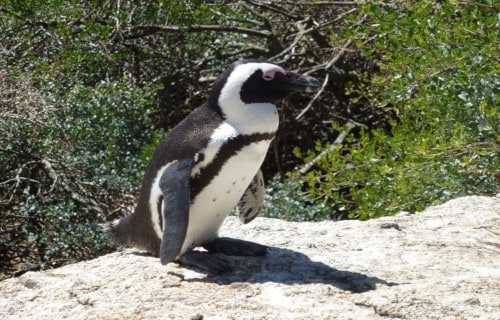
African Penguin Facts
- Next up in this article about the Amazingly Abundant Avians of the World comes the next penguin on the list, the surprising African Penguin.
- This intriguing product of Nature and evolution most frequently goes by the informative common name due to an amazing fact. That is not its only informal moniker, though. It also bears the names of South African Penguin and Cape Penguin.
- Among scientific professionals, however, such as researchers, its better known by another term. That’s the official species name of the Spheniscus demersus. Regardless of which of these one uses to refer to it, the bird remains an impressive creature.
- It received this tongue-twisting name due to the work of the eminent Swedish researcher, Carl Linaeus. He accomplished the first known recognition of the animal as a separate and distinct species. The scientifically noteworthy event took place in 1758.
- It also remains well-known for a somewhat unusual physical trait. That’s its distinctive, and quite loud, donkey-like braying, unique among its kindred. Subsequent to its discovery, this led to its also earning it the nickname of the donkey penguin.
- Sadly, however, this unique avian now faces the very real threat of extinction. This fact occurs due to a rapid and still ongoing decline in population. Between 1910 and 2010, its numbers fell precipitously. That went from an estimated 1.5 million to only 55,000.
- Humans previously hunted its eggs for consumption, beginning the process of its decline. Since that time, multiple oil spills and industrial fishing have further reduced its numbers. With climate change added in, the IUCN now lists it as Endangered.
African Penguin Physical Description
Like many of its relatives, the amazing African Penguin draws the attention of those fortunate enough to encounter it. Unlike some of those same cousins, however, it does not do so due to pure size. That’s because this marvel of creation ranks as average-sized.
The flightless bird does stand out due to another physical aspect, though. That’s irrelevant of its physical measurements. That’s true given the fact that this variety of penguin displays only a slight degree of the physiological characteristic of sexual dimorphism.
Individuals of both genders, therefore, both mature and immature alike, manifest nearly the same overall appearance. The gender-based difference extends to both weight and height. Overall, however, the species measures an average of 24 – 28 in (61 – 71 cm).
In terms of sheer body mass, this avian again reaches only an average size for its kind. Fully grown specimens reach overall weights averaging between 4.9 – 7.7 lb (2.2 – 3.5 kg). Females of the species, meanwhile, tend to remain slightly smaller in both height and weight.
Exceptional individuals of both sexes of the African Penguin do sometimes occur, however, in both height and weight. Even among these rare individuals, though, neither attribute exceeds the average by any extraordinary degree. In this, it again mimics most of its cousins.
Its general appearance closely follows other penguins. The back is mostly black, and the stomach white. A black stripe and black spots dot the stomach, unique to each bird. A pink gland develops above the eyes, which plays a key role in regulating its body temperature.
- Kingdom: Animalia
- Phylum: Chordata
- Class: Aves
- Order: Sphenisciformes
- Family: Spheniscidae
- Genus: Spheniscus
- Species: S. demersus
African Penguin Distribution, Habitat, and Ecology
The mesmerizing African Penguin inhabits a highly limited region of the globe. That region, however, is rather surprising, given the nature of the animal. That’s due to the fact that, as the very name implies, this particular penguin inhabits part of the continent of Africa.
More precisely, it inhabits an area off the southwestern coast of that continent. There, the eye-catching birds make their home spread across a total of 24 islands. The isles they live on dot a large area of ocean that extends from Algoa Bay, in South Africa, to Namibia.
In recent years, a few mainland colonies have begun to appear. Although the reason still remains undetermined conclusively, it seems likely due to the rapid decline of mainland predators in the region. In all areas, though, it lives along the coastline, near the water.
Again, much like related species, the African Penguin forages in the open sea. There, it mainly preys on species of small fish, crustaceans, and even small squid. The animals stay close to shore, though. Individuals rarely venture more than 12 mi (19.3 km) from shore.
Unfortuntely, its own natural predators occur both in the sea and on land, as well. These mostly include sharks and fur seals at sea. Numerous terrestrial animals threaten it while on land or nesting, however. Though agile in the water, it remains slow and vulnerable on land.
Kakapo
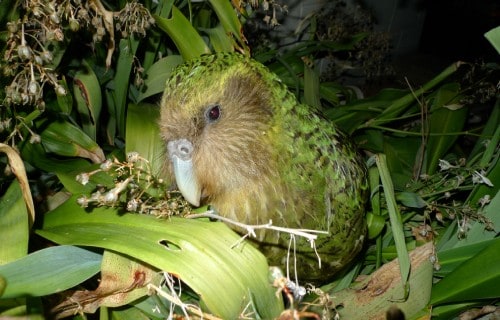
Kakapo Facts
- The ninetheenth creature gracing this collection of the Amazingly Abundant Avians of the World is the highly distinctive bird known simply as the Kakapo.
- This astounding avian most frequently goes by the simple common name that we have used here. It does have other alternate names, however. These terms happen, in fact, to be more descriptive. They include the night parrot and the owl parrot.
- Professional researchers, though, typically refer to the amazing animal by its formal scientific name. That’s the tongue-twisiting term of the Strigops habroptilus. Regardless of which name one uses, though, it’s a truly fascinating work of Nature.
- The highly respected English researcher, George Robert Gray, made the first formal recognition of the creature as a separate and distinct species. This scientifically noteworthy deed he further accomplished due to his research, in the year 1845.
- Regrettably, this truly remarkable bird now sadly finds itself facing serious threats to its continued existence as a species. Its greatest threats include habitat loss, climate change, and also non-indigenous predators, such as cats, ferrets, rats, and stoats.
- Due to these various depredations, the known population of the remarkable Kakapo only totaled 148 extant individuals, as of April 2018. For this reason, among others, the IUCN now lists the amazing bird species as Critically Endangered.
Kakapo Physical Description
The mesmerizing Kakapo almost instantly captivates those few fortunate enough to encounter one. That’s especially true in the wild. Its many incredible qualities have additionally served to create a certain mystique around the bird, in some areas and circles.
Perhaps the most notable fact about the truly impressive bird, somewhat surprisingly, continues to be its physical size. That’s because this fascinating animal ranks as rather small, compared to some of the other 60-odd species of flightless birds throughout the world.
This avian resembles a rather rotund parrot. The species also presents a moderate degree of sexual dimorphism. The larger males average about 4.4 lb (2 kg) in weight. Meanwhile, the smaller, and only slightly less rotund, females only average about 3.3 lb (1.5 kg).
In coloring, the Kakapo typically presents a striking combination of yellowish-green colors. This appears mottled with brownish gray or black on the upper side. The flank and breast also tend to have the same background colors, but the mottling consists of yellow.
- Kingdom: Animalia
- Phylum: Chordata
- Class: Aves
- Order: Psittaciformes
- Family: Strigopidae
- Genus: Strigops
- Species: S. habroptila
Kakapo Distribution, Habitat, and Ecology
Unfortunately, the incredible Kakapo evolved as native solely to an extremely restricted habitat range across the globe. Given its distinctiveness, the precise zone of habitation it possesses probably won’t surprise many people. Nature blessed the entire region.
In fact, it only lives in what now forms the island nation of New Zealand. Geographically situated near Australia, this large island country seves as home to an extraordinary array of remarkable species. Currently, it only exists on three islands kept free of predators.
The tiny avian does, however, display impressive adaptability. That holds true because, in its native habitat, the avian inhabits a multitude of environments. These vary, of course, but most often include forests, scrublands, grasslands, and also coastal areas.
Although it adapts well in regards to it range, it still maintains certain behavior patterns, though. As a result, the flightless bird primarily lives and feeds in a nocturnal manner. During the day it most commonly prefers to roost under various forms of cover.
Yet this wonder of evolution doesn’t let its grounded state slow it down, however. While the Kakapo remains incapable of light, it adapted into an extremely accomplished climber. The amazing creature uses this highly useful skill to find its food in the trees.
The impressive bird also differentiates itself from its fellows in yet one more manner. That’s due to the surprisng fact that, unlike most other birds, this species remains entirely herbivorous. It usually feeds on a variety of seeds, leaves, fruits, and stems.
Tawny Frogmouth
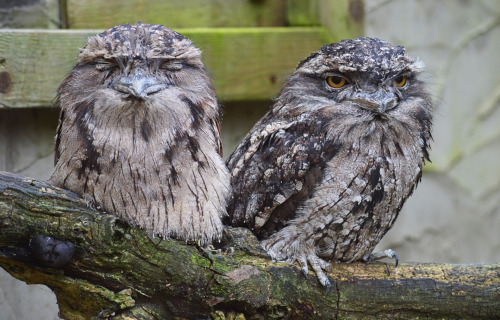
Tawny Frogmouth Facts
- In this spot in this gathering of Amazingly Abundant Avians of the World we present the unusual animal known as the Tawny Frogmouth.
- The term applied to it serves as the most frequently used common name for this remarkable species of bird. It also occasionally goes by the alternate names of either the mopawk or the mopoke. These, however, are now archaic terms.
- Professional researchers, however, typically refer to it by its official scientific name. That’s the hard to pronounce moniker of Podargus strigoides. Regardless of which name one chooses to use for it, the fascinating bird is an amazing product of evolution.
- The first known offical recognition of the fascinating animal as a separate and distinct species occurred in the year 1801. At that time, the highly respected British naturalist and ornithologist John Latham made that entry into the annals of science.
- Fortunately, the wonderful avian appears to be maintaining a population base that’s both stable and sufficient, at least for the moment. The IUCN, therefore, presently lists it as a species of Least Concern on the organization’s Red List of Threatened Species.
- Given the nature of its habitat, however, it nevertheless could potentially face several threats in the near furture. Habitat loss due to human expansion certainly forms one of these. Its greatest potential peril, however, likely comes from climate change.
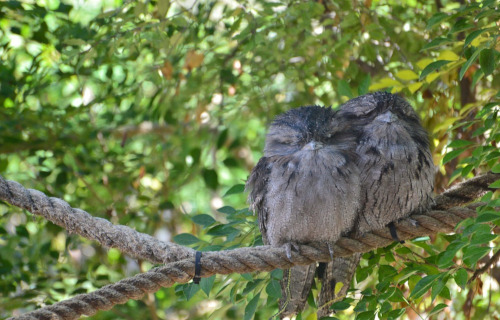
Tawny Frogmouth Physical Description
The impressive Tawny Frogmouth certainly catches the eye of most of those who encounter it. While its size isn’t the only reason this occurs, that trait of the species obviously bears mentioning. That’s because the remarkable bird attains a highly respectable size.
It also displays a moderate degree of the physiological characteristic known as sexual dimorphism. In its case, this trait manifests itself in terms of that size. More specifically, females generally reach a smaller size than their male counterparts, though only slightly.
Typically, however, that difference isn’t highly noticeable at first glance. Overall, mature individuals reach a body length of as much as 21 in (53 cm). An average adult weight, moreover, equals roughly 1.5 lb (0.7 kg). That measurement, though, is between feedings.
Individuals have a stocky body shape, with comparatively short legs. The wings grow rounded in shape. The amazing bird also has a wide beak. Typically, this presents as olive gray or black in color. The tips of these bills also have a distinct hook shape at the end.
The eyes of the fascinating Tawny Frogmouth also draw attention. That’s due to the fact that these develop large and dark yellow in color. The predominant color of the feathers, though, appears to be various shades of gray, with dark black streaks scattered throughout.
- Kingdom: Animalia
- Phylum: Chordata
- Class: Aves
- Order: Caprimulgiformes
- Family: Podargidae
- Genus: Podargus
- Species: P. strigoides

Tawny Frogmouth Distribution, Habitat, and Ecology
The region of the globe in which the fabulous Tawny Frogmouth evolved likely comes as no surprise to most who learn it. That’s because it originated in a part of the world renowned for its remarkable wildlife. More precisely, it evolved on the continent of Australia.
Aiding in its ongoing success as a species is the range of distribution the impressive bird appears in, even within that area. In point of fact, it inhabits a comparatively large portion of the continent. This zone of habitation covers most of the mainland regions, in fact.
A few exceptions to this pattern do exist, however. These include the central Northern Territory, western Queensland, and much of the Nullabor Plain. Its success as a species is only partly due to this range, though. It also has yet another factor working in its favor.
That’s due to the fact that the animal shows itself to be a highly adaptable species. The distinctive avian usually appears in woodlands, forests, heathland areas, scrubland, and savannas. Most individuals do not live in areas of heavy rainforest, however.
Just as holds true of its countless relatives, the animal evolved with a carnivorous nature. It feeds opportunistically, though, like most birds. Typically, its prey consists of small insects, though taken in large quantities. It also preys on small mammals and reptiles.
The remarkable Tawny Frogmouth has also adapted quickly and relatively well to human civilization. Because of this, the bird often feeds on the small vermin often found near human habitations. This includes the suburbs, often in large parks and even backyard trees.
Galapagos Penguin
Galapagos Penguin Facts
- The twenty-first entry into this compendium of Amazingly Abundant Avians of the World is yet another mesmerizing species, the Galapagos Penguin.
- This beautiful flightless bird most frequently goes by the fully informative common name for excellent reasons. For the moment, though, it has no other broadly accepted general name. While certainly not unknown, that’s somewhat uncommon.
- Within the scientific community, however, it’s typically referred to by its formal title. Like most such monikers, it’s rather difficult for the layperson to pronounce. That’s because this natural marvel holds the official name of the Spheniscus mendiculus.
- It received that appellation due to the efforts of the Swedish zoologist, Carl Jakob Sundevall. The respected researcher accomplished the first recognition of it as a separate and distinct species. That scientifically noteworthy event occurred in 1971.
- This wonder of evolution remains best known for one specific attribute. But that has nothing to do with its physique. Instead, it’s due to a quirk of its habitat range. Because of one aspect of that, it’s the only penguin to appear in the Northern Hemisphere.
- Sadly, the nature of that same range also makes the Galapagos Penguin the rarest of all known varieties of penguin. Its present population only totals roughly 1,800 individuals. The IUCN therefore currently lists this magnificent avian as Endangered.
- Its habitat zone isn’t the only factor threatening it with possible extinction, though. The animal also faces other dangers. These include the introduction of invasive species by humans. The most dire threat it faces, however, likely consists of climate change.
Galapagos Penguin Physical Description
The fabulous Galapagos Penguin typically captivates those fortunate enough to encounter it in its native habitat. While the animal does so due to reasons that vary between individuals, pure size rarely counts among them. That’s because it’s a small member of its genus.
In fact, it represents the second-smallest of all its relatives. Only the Little Penguin ranks as tinier. In this regard, however, it does follow the same pattern as related species. That’s in the fact that it displays a degree of the physiological trait of sexual dimorphism.
More precisely, the males of the impressive species attain a slightly greater size than that of their female counterparts. The overall difference remains quite minor, however. In general, individuals reach an average height ranging from 19 – 20 in (48.25 – 50.8 cm).
Although weights also naturally vary, this seems to do so simply from individual to individual. The gender appears to play no noticeable part in this. That measurement ranges from 4.4 – 8.8 lb (2 – 4 kg). Females thus sometimes have a marginally bulkier form.
The general appearance of the Galapagos Penguin follows the same broader pattern common to its kindred. Some specific variations nevertheless do exist, of course. These serve to easily distinguish this intriguing creature from other examples of its kind.
The head presents as black, with a border of white. This runs from behind the eye, around the chin and ears, ending at the throat. Its beak shows black on top, fading to pink underneath. Each also manifests two black bands across the breast, back, and to the thigh.
- Kingdom: Animalia
- Phylum: Chordata
- Class: Aves
- Order: Sphenisciformes
- Family: Spheniscidae
- Genus: Spheniscus
- Species: S. mendiculus
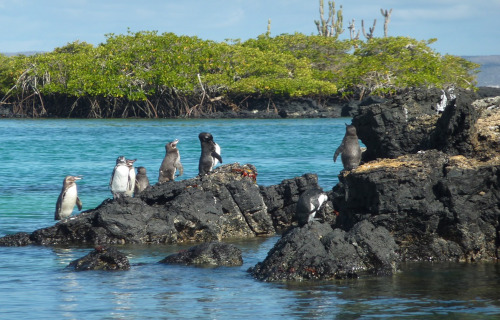
Galapagos Penguin Distribution, Habitat, and Ecology
The amazing Galapagos Penguin evolved to an extremely limited section of the globe. The precise nature of that zone of habitation is more intriguing that one might think, though. The majority of its numbers dwell in the Southern Hemisphere, on two islands.
Named Fernandina and Isabela, these two bodies hold roughly 90% of its present population. Much smaller groupings of the animal also appear on Bartolomé, northern Santa Cruz, Santiago, and Floreana. The northern tip of Isabela crosses the equator, however.
Collectively, these form part of the Galapagos Islands. There, despite the tropical latitude, it manages quite well. It spends much of its time in the cooler Humboldt and Cromwell currents. Virtually all individuals live along the coastal regions, near the water.
Individuals also spend a large percentage of their time in local caves. It’s in these sheltered locations that they construct their nests. If a cave isn’t available, some make theirs in larger crevices, typically in shaded regions. Both further provide protection from predators.
Like its many relatives, the amazing Galapagos Penguin evolved as carnivorous in nature. The animal generally forages in the marine waters during the day, then returns to land at night. Its principal prey consists of various small fish, and occasionally crustaceans.
Its own predators appear both on land and in the water. Snakes, hawks, owls, crabs, and rats prey on it when it’s on the land. In the water, it faces even larger dangers. There, it falls victim to the appetites of such species as sharks, fur seals, and sea lions.
Northern Bald Ibis
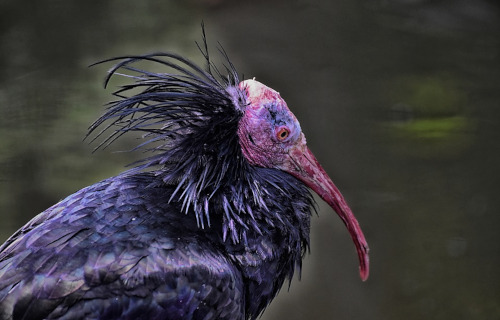
Northern Bald Ibis Facts
- Our next choice for inclusion in this article about Earth’s Amazingly Abunday Avians is the intriguing bird known as the Northern Bald Ibis.
- This visually distinctive avian remains best known by the descriptive common name that we’ve used herein. It does have other, less frequently used non-technical names, though. These include the shorter monikers of the waldrapp and the hermit ibis.
- In scientific circles, however, it’s generally better known by its official title. That’s the somewhat hard to pronounce term of Geronticus eremita. Regardless of which name one chooses to use when referring to it, the bird represents an intriguing species.
- The animal owes its formal name to the efforts of a highly respected individual. That’s due to the fact that the eminent Swedish researcher, Carl Linnaeus, made the first official recognition of it as a separate and distinct species. This he managed in 1758.
- Sadly, its population numbers plummeted to fewer than 1,000 specimens in the wild in previous decades. Conservation and reintroduction efforts began in the 1990’s, however. Estimates also place around 2,000 individuals currently living in captivity.
- Due to its dire predicament, the IUCN originally listed the animal as Critically Endangered on its Red List. Thanks to the still ongoing efforts of several groups, the organization later upgraded that status. The creature now lists as Endangered.
- Understandably, given its delicate status, the Northern Bald Ibis faces numerous threats to its existence in the wild. Habitat loss and hunting natually represent serious dangers to the bird. Its greatest threat now, however, likely comes from climate change.
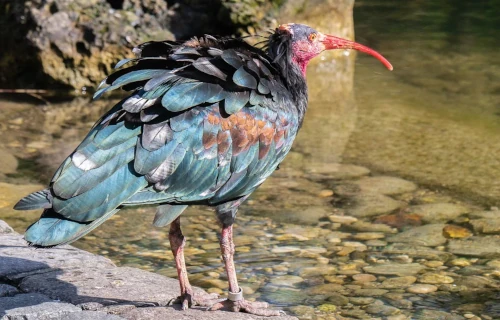
Northern Bald Ibis Physical Description
The remarkable Northern Bald Ibis quickly impresses those fortunate enough to encounter it, especially in the wild. Unlike some species, though, it does so for a combination of several reasons. One of those is its sheer physical size for a bird still capable of sustained flight.
Like many of its winged relatives, however, it does display a certain degree of the physiological trait of sexual dimorphism. In its case, this trait manifests itself in terms of simple physical dimensions. More precisely, males average a larger size than females.
That basic physical difference ranks as comparatively minor, though. Males of the somewhat surprising species attain an average wingspan measuring approximately 53 in (135 cm). Females of the animal, meanwhile, reach an average wingspan of only 49 in (125 cm).
In terms of plumage, at least, the genders remain virtually indistiguishable. This aspect presents as a predominantly black background. The feathers do, however, typically possess a slight iridescent quality. This generally appears as either a violet or a bronze-green.
Individuals of the Northern Bald Ibis also most commonly display one more gender-based physical difference. In this respect, the avian follows the pattern of other varieties of ibis. The beaks of the males grow to a greater length than those of their female counterparts.
Other noteworthy physical traits of the species include shorter legs than most ibises. But perhaps its most noteworthy visual trait centers on the head and face. These parts of the body display a lack of feathers, and obviously serves as the source of the common name.
- Kingdom: Animalia
- Phylum: Chordata
- Class: Aves
- Order: Pelecaniformes
- Family: Threskiornithidae
- Genus: Geronticus
- Species: G. erimita
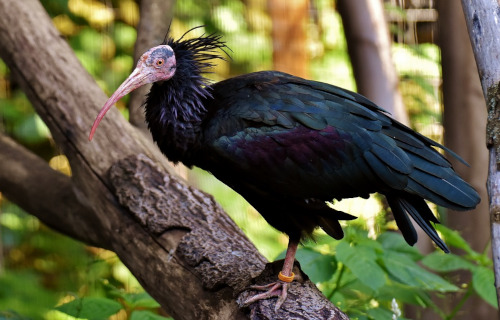
Northern Bald Ibis Distribution, Habitat, and Ecology
The Northern Bald Ibis currently lays claim to an extremely limited zone of habitation. That specific zone does remain well known for its remarkable species, however. That area of habitation, though, presently consist of a very small portion of the continent of Africa.
Presently, the visually distinctive animal appears in the wild only in the country of Morocco. Previously, however, it occupied a much more extensive range. That’s because populations of the animal once covered much of both Europe and portions of the Middle East.
Like most species, it displays decided preferences in its choice of habitat type. It does, however, further distinguish itself from its many cousins in this regard. Most other varieties of ibis prefer wetlands for their home. This bird, though, prefers undisturbed cliff ledges.
This particular environment also plays another role in its life cycle. That’s because the location places the population in close proximity to local areas of steppe. Such a precise and specific combination represents an important evolutionary requirement for this bird.
The Northern Bald Ibis feeds only in dry, now often grazed areas. This frequently consists of fallow fields and semi-arid steppes. Having evolved as a carnivore, it often consumes small prey, such as lizards and ground birds. It also consumes small invertebrates, such as snails.
The species also has a relatively gregarious nature and lives in small groups or colonies. Pairing typically occurs between 3-5 years of age. These birds usually mate for life, and both genders share in raising the young. In the wild, an average individual lives for 10 -15 years.
Gentoo Penguin
Gentoo Penguin Facts
- The twenty-third marvel making an appearance in our listing of Earth’s Amazingly Abundant Avians hlds the appealing name of the Gentoo Penguin.
- This gorgeous product of Nature and evolution most often goes by the simple common name across its range. It does have a few other general titles, though. These include the equally easy terms of the Johnny Penguin, or even just the Johnny.
- Within most scientific circles, however, it’s more typically known by its official name. Thankfully, that’s a relatively easy term for the layperson to pronounce. That’s because this marvel of biology bears the technical moniker of the Pygoscelis papua.
- The animal received that name due to the efforts of the German naturalist, Johann Reinhold Forster. The noted ornithologist accomplished the first formal recognition of the bird as a separate and distinct species. This noteworthy deed occurred in 1781.
- Regardless of which of these one chooses to employ when discussing it, the animal remains an impressive species. It ranks as the third-largest of all known penguin varieties. Four acknowledged subspecies of this natural marvel also currently exist.
- Thankfully, it appears to be maintaining a population base that’s both stable and sufficient. That fortunate fact further seems to hold true throughout the entirety of its native range. The IUCN therefore presently lists it as Least Concern on its Red List.
- Sadly, though, it faces many potential threats to its continued existence. Most of these stem from the actions of mankind. Fishing, hunting, and even recreational activities pose dangers. Its greatest threat, though, likely comes from climate change.
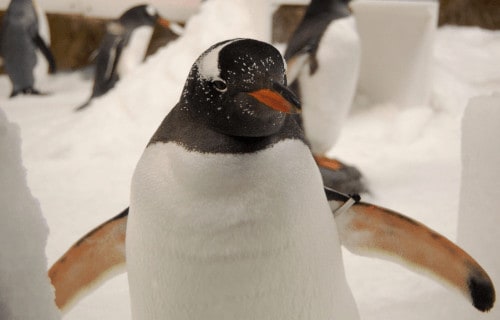
Gentoo Penguin Physical Description
The remarkable Gentoo Penguin never fails to captivate those fortunate enough to encounter it in its native environment. Yet it doesn’t do so merely due to its appearance. That also occurs due to its impressive physical statue, as has already been mentioned.
The beautiful creature also follows the pattern common to many animal species regarding physique. That’s in the fact that it displays a degree of the physiological characteristic of sexual dimorphism. In its case, though, this only appears to a minor extent.
Males of the species attain a greater size than their female counterparts. These usually reach a maximum weight of approximately 19 lb (8.5 kg) prior to moulting. Following that process, however, that measurement frequently drops to as little as a mere 11 lb (4.9 kg).
But the females remain slightly less bulky in their form. These generally grow to a maximum mass equaling roughly 18 lb (8.2 kg). After their moulting process, that usually reduces to about 9.9 lb (4.5 kg). Exceptional individuals nevertheless do sometimes occur.
Otherwise, specimens of both genders of the Gentoo Penguin present the same overall appearance. One combination of features specifically stands out in this regard. That’s the presence of a wide white stripe that extends across the head, and its orange-red bill.
The remainder of the body displays a pattern of coloring typical among its many brethren. It mainly displays black on the back and sides, and white on the stomach. It does, though, show whitish-pink feet, and the most prominent tail of all known species of penguin.
- Kingdom: Animalia
- Phylum: Chordata
- Class: Aves
- Order: Sphenisciformes
- Family: Spheniscidae
- Genus: Pygoscelis
- Species: P. papua
Gentoo Penguin Distribution, Habitat, and Ecology
The intriguing Gentoo Penguin evolved as native to a moderate expanse of the globe. The exact location of this region comes as no great surprise, though. That holds true since this product of eons of development lives in the region now known as Antarctica.
This includes, of course, the peninsula itself. Yet many of them also make their homes on the numerous sub-Antarctic islands prevalent in this part of the world. The largest single concentration appears on South Georgia, itself a member of the Falkland Islands group.
The flightless bird displays strong preferences regarding its choice of habitat type. Surprisingly to many, depsite the prevalence of ice in the cold climate the animal resides in, it typically chooses to live on various surfaces that remain principally free of icy coverings.
These typically consist of regions such as flat, rocky areas. Many choose to live on or around low-hanging cliffs, or even between clumps of grass. In both instances, though, these geographical features most often lie situated within relatively shallow coastal sections.
Like its relatives, the Gentoo Penguin evolved as a carnivorous creature. It primarily feeds on quantities of crustaceans, such as shrimp and krill. They generally supplement this with various species of fish and cephalopod. They also tend to feed quite opportunistically.
After mating, the female almost always lays two eggs. Both parents share in the incubation, alternating daily. Hatching usually takes 34 – 36 days. Seabirds, though, often prey on the eggs or chicks. Adults fall vicitm to sea lions, leopard seals, and orcas in the water.
Earth’s Amazingly Abundant Avians
We truly hope that each of you greatly enjoyed reading, and hopefully learning from, this article about Earth’s Amazingly Abundant Avians. It’s also our sincere hope that doing so has left you with either a new or renewed appreciation for such wonders of Nature.
Unfortunately, many other such species around the world now find themselves facing threats to their continued existence. Many of those dangers, in fact, stem from the actions of mankind. We must each do all we can to protect and preserve them all.
Check out our other articles on 7 Breathtaking East Coast Wonders, The Mighty Tornado, 5 Fabulous Mammals of Florida, Africa’s Many Geological Masterpieces
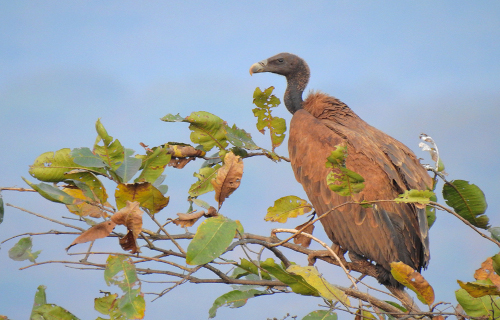
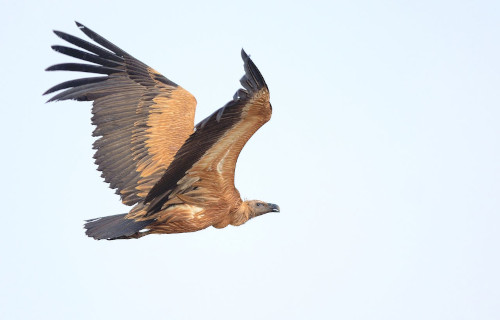
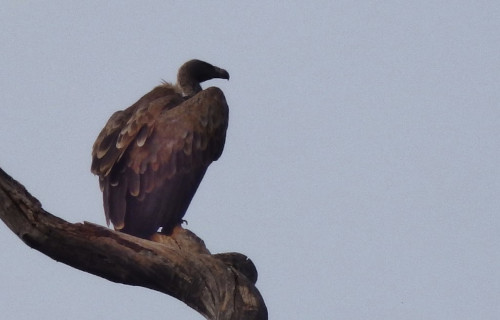
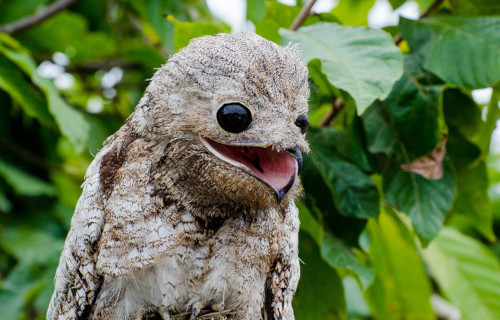
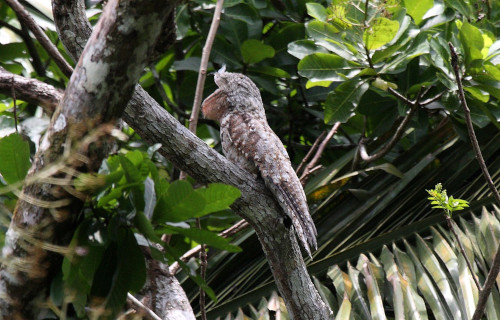
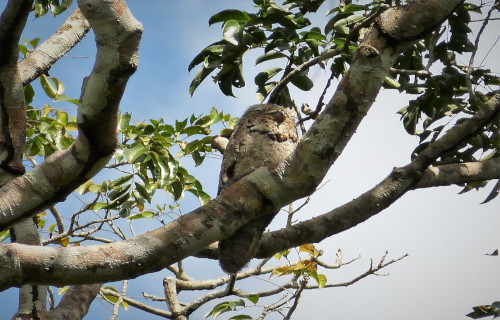
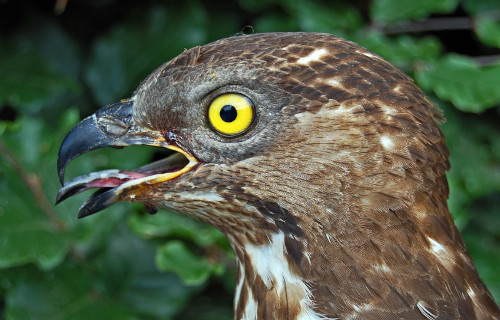
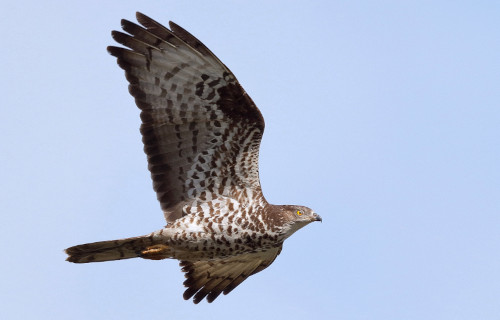
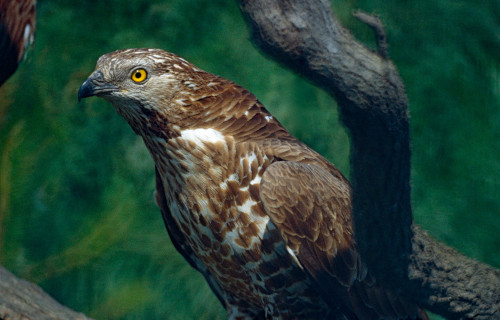
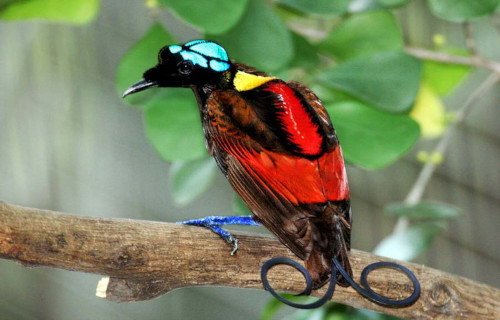
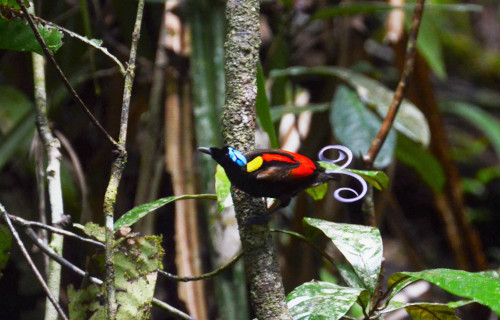
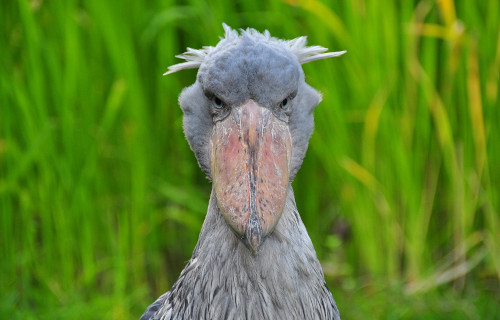
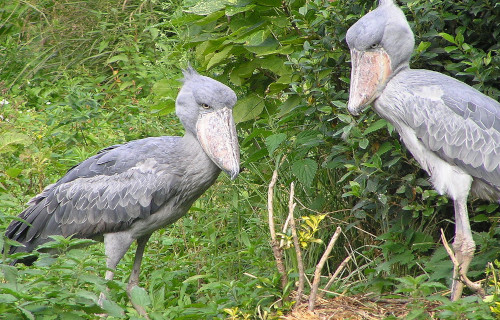
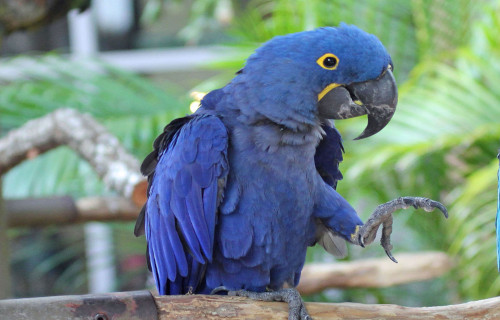
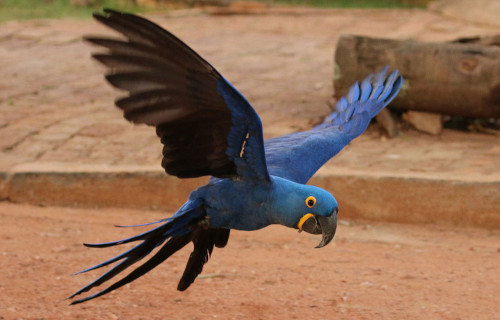
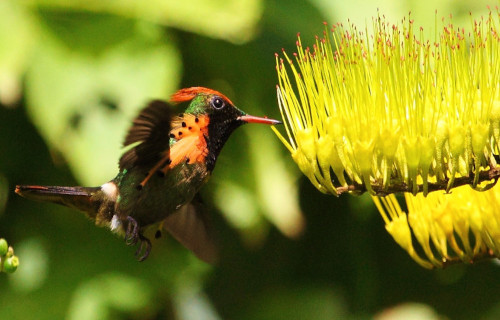
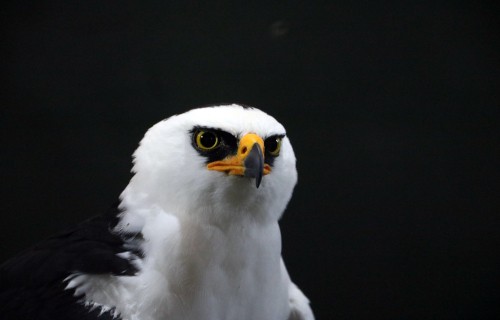
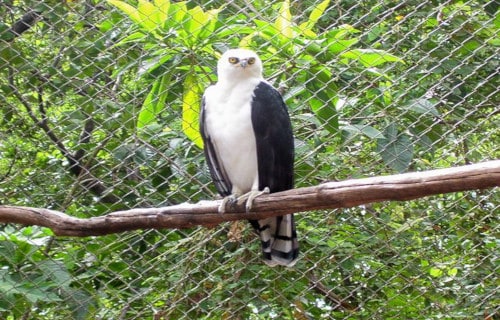
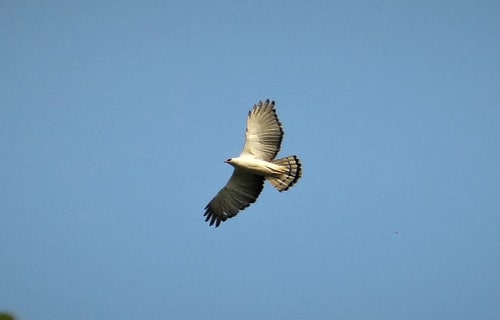
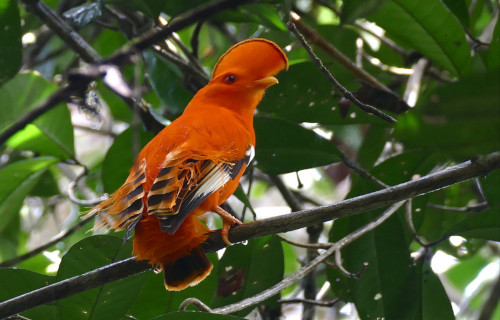
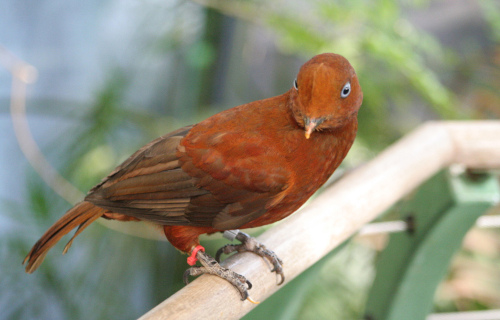
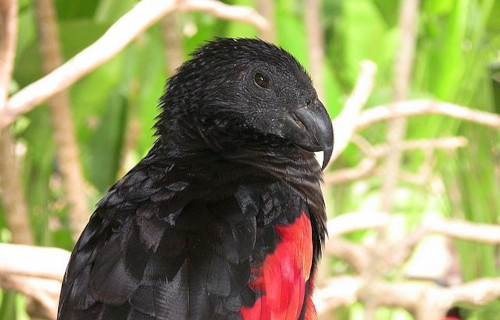

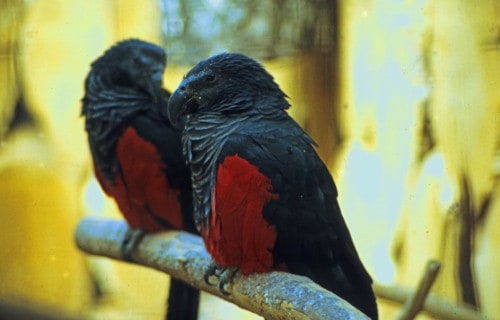
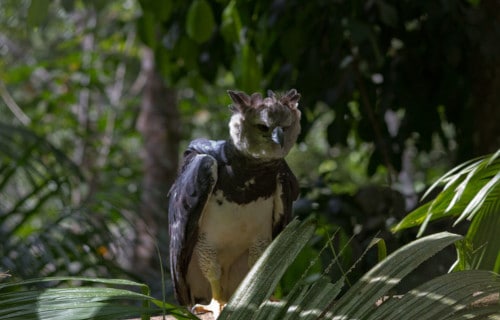
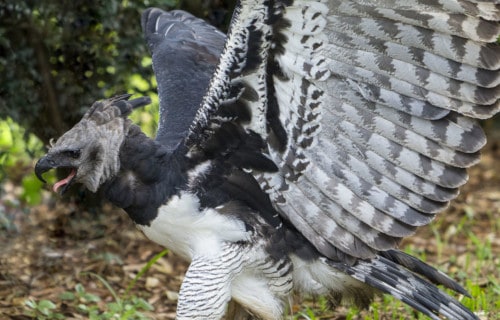
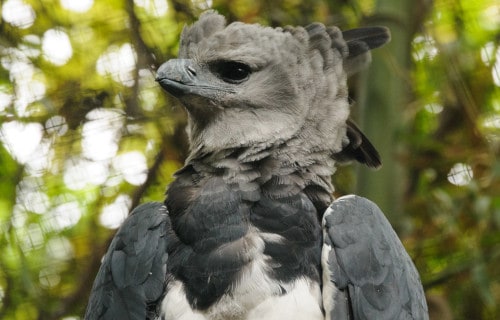

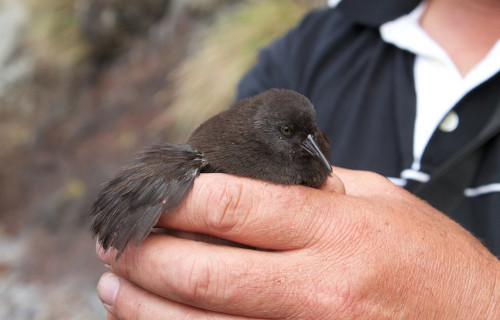
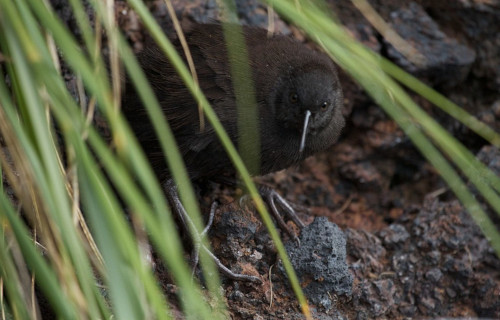
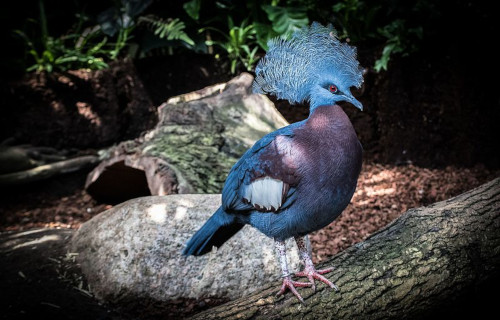
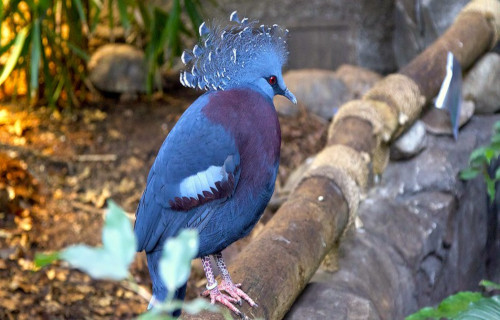

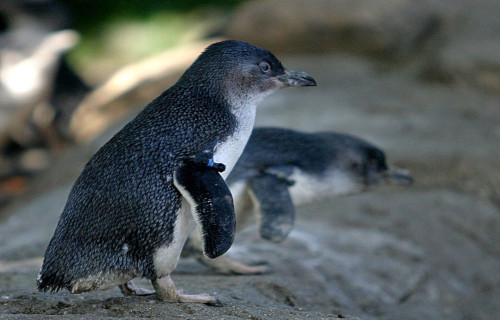
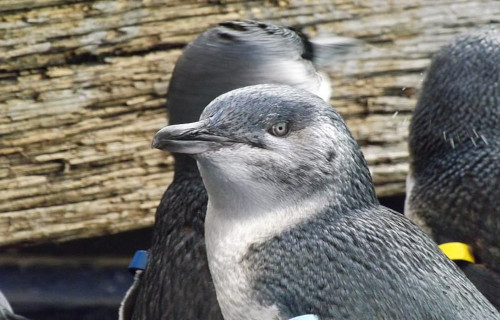
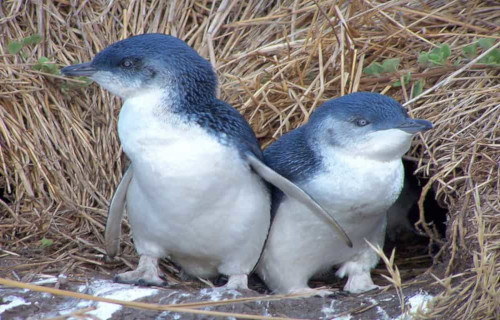
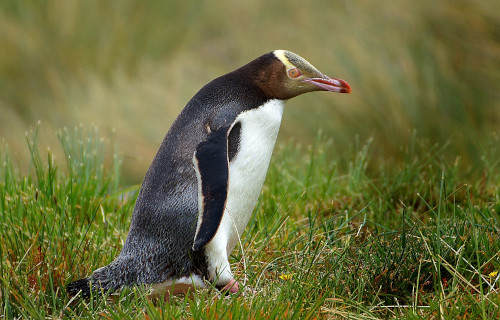
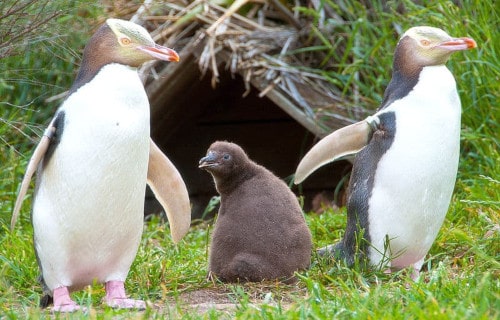

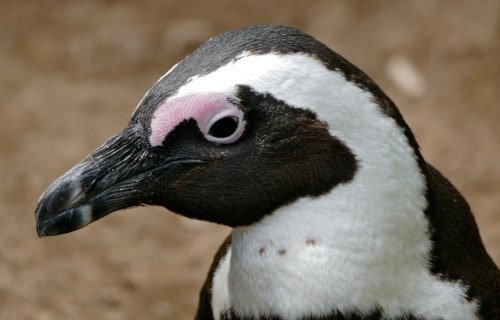
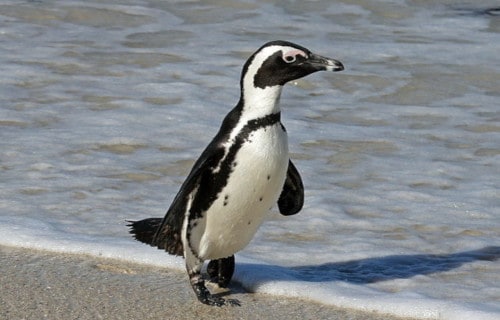
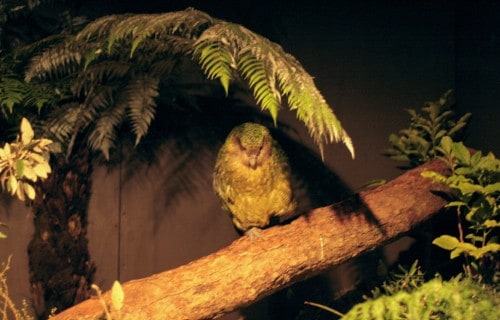
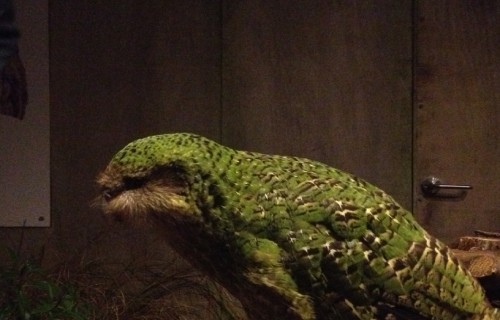
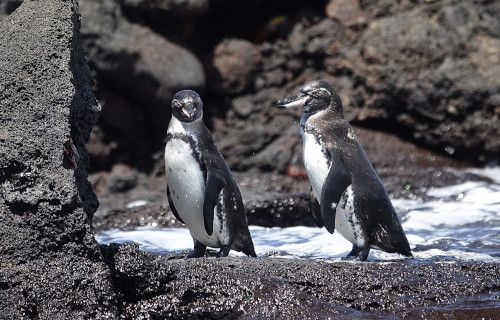
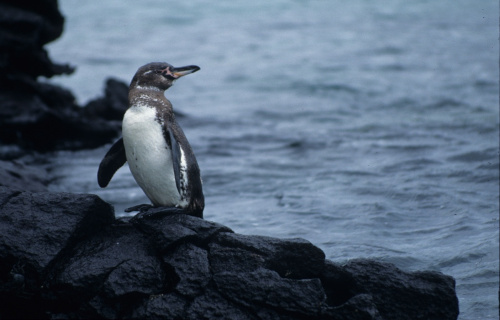
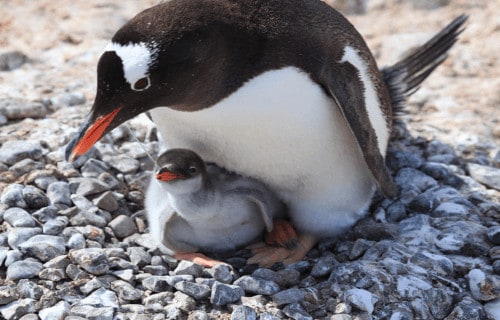
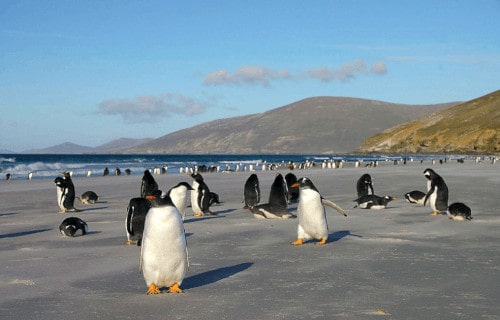









Leave a Reply